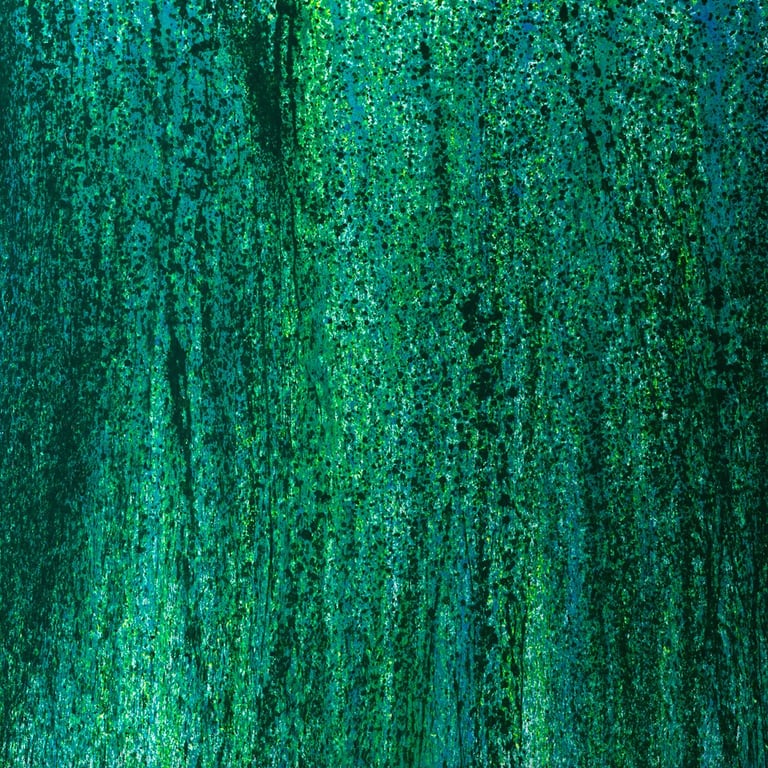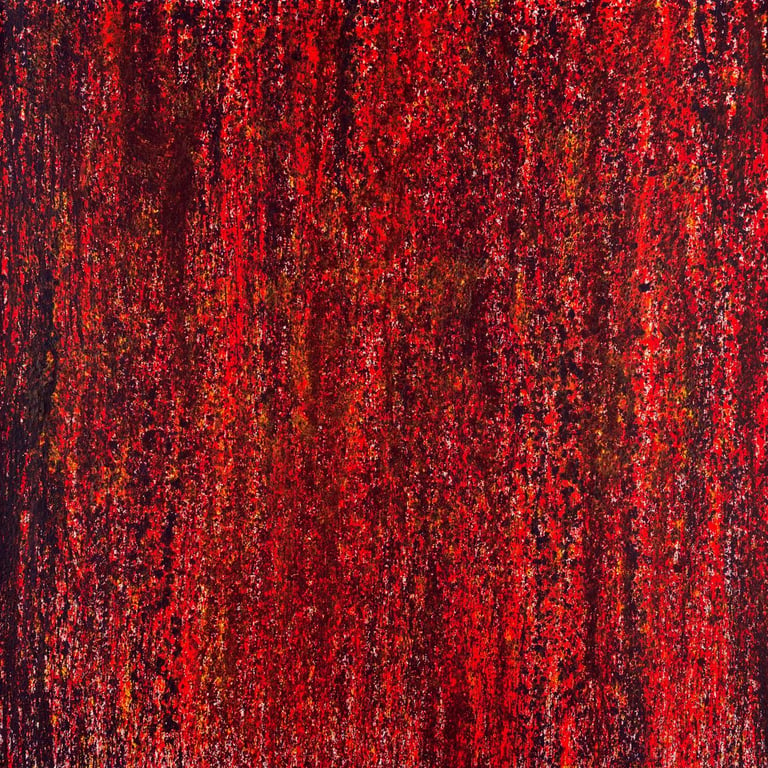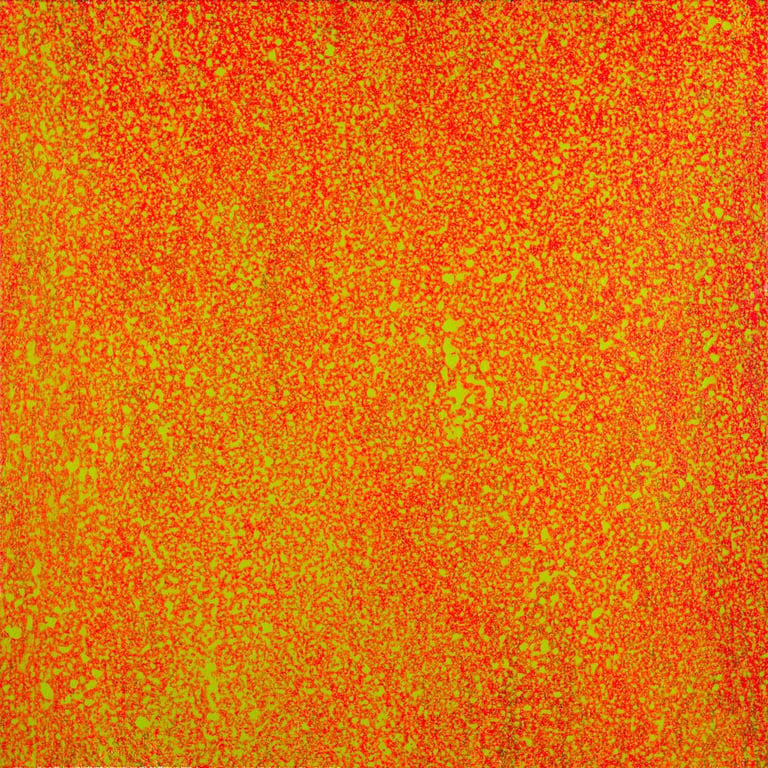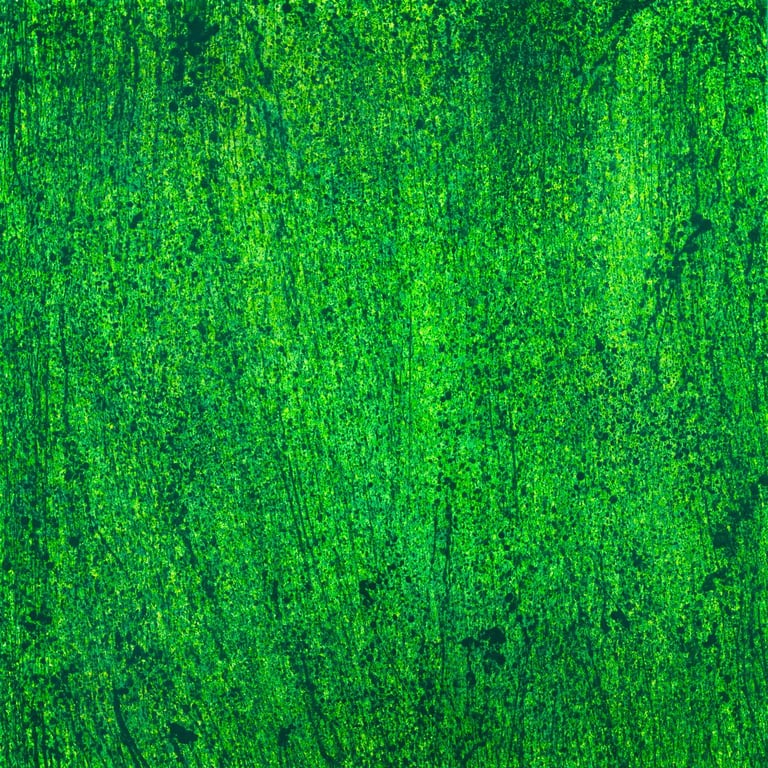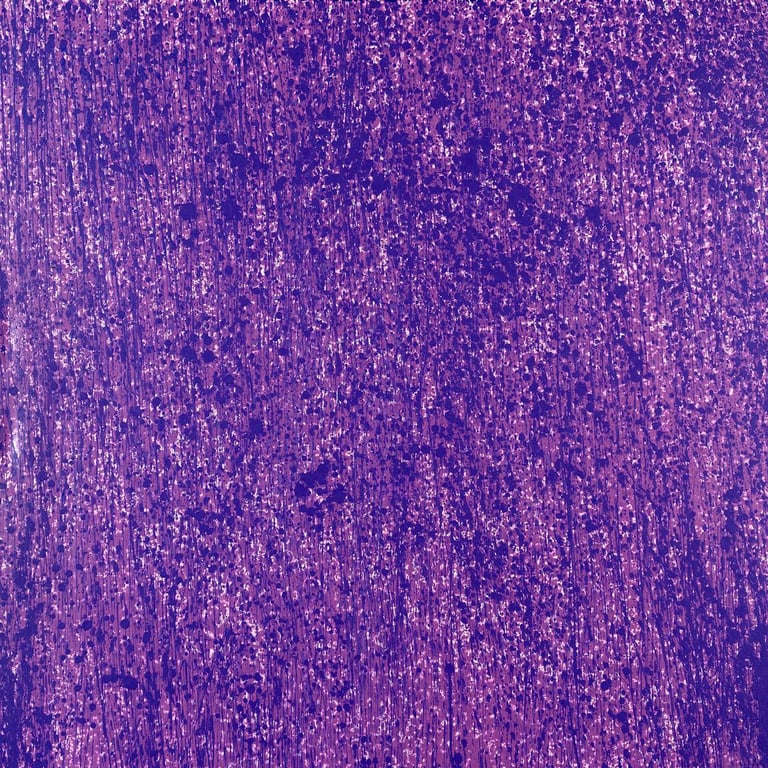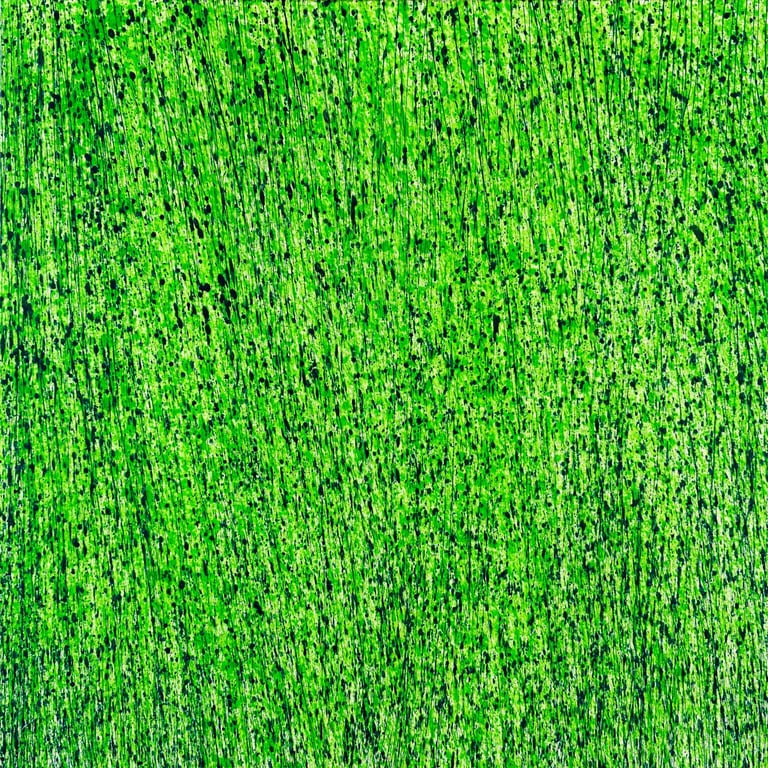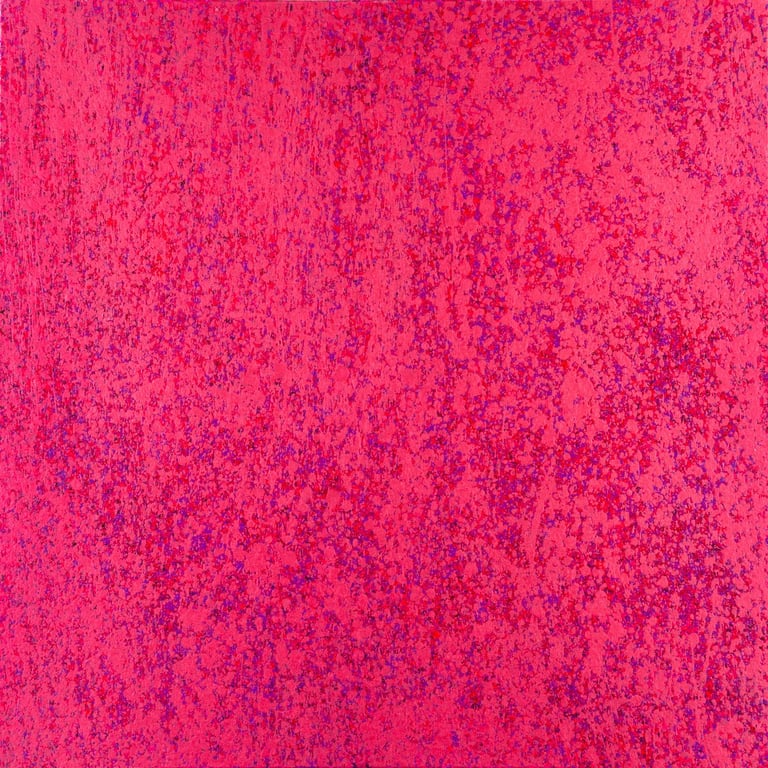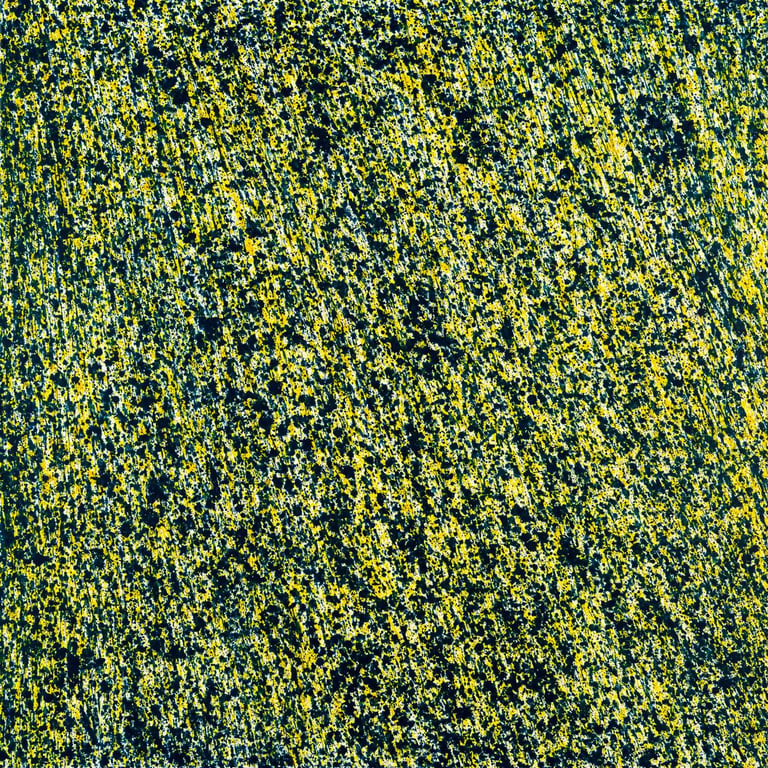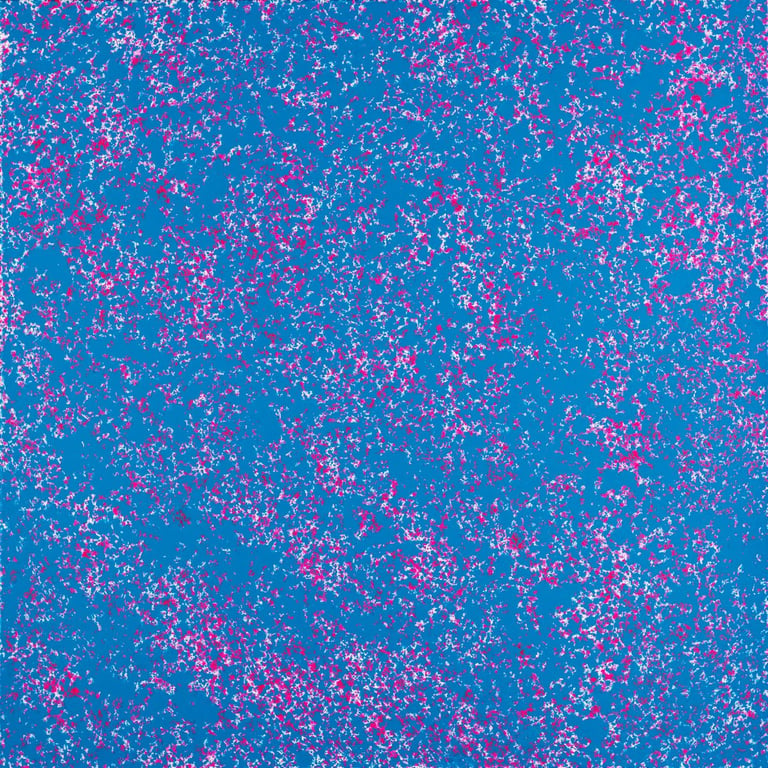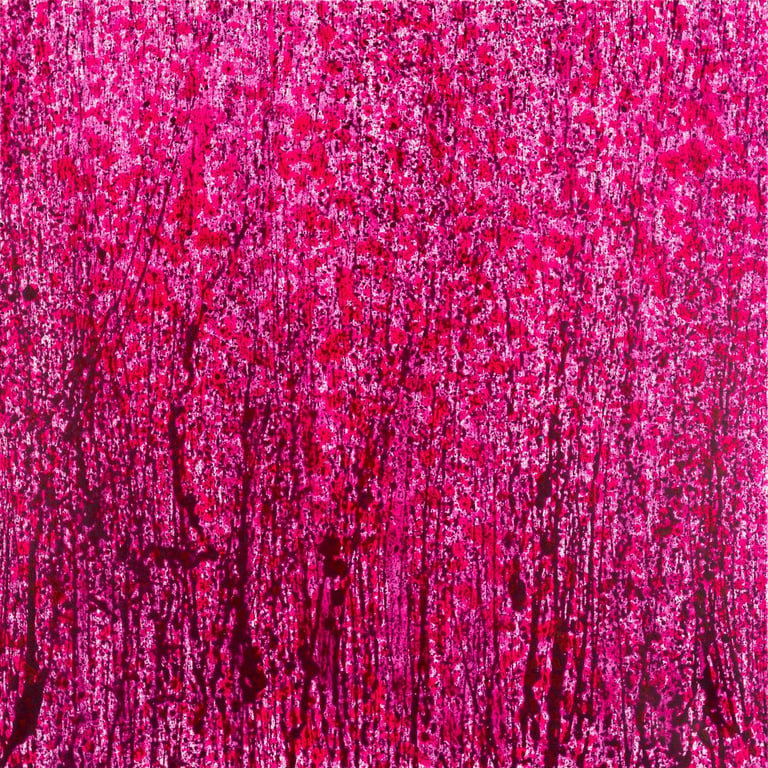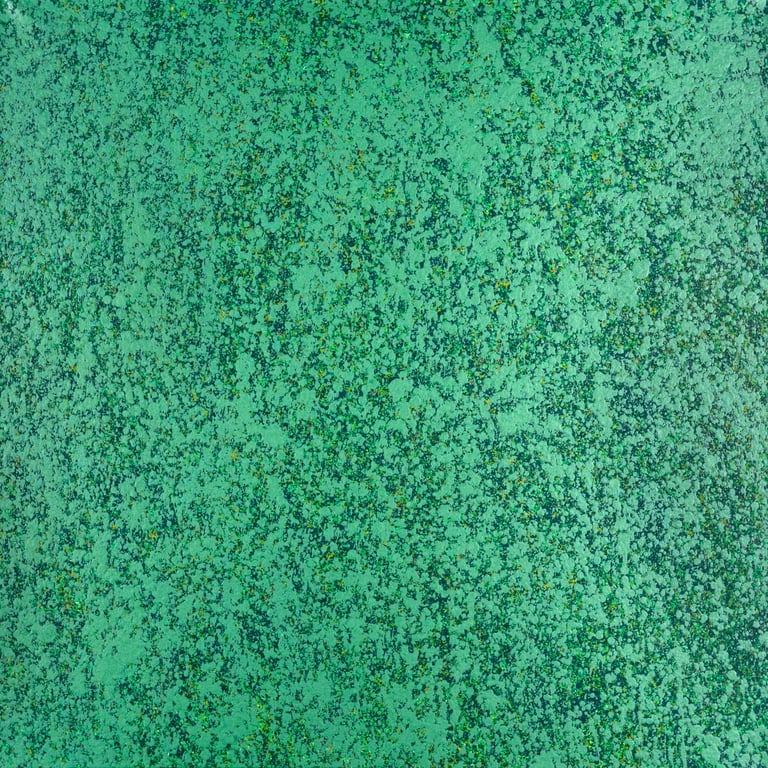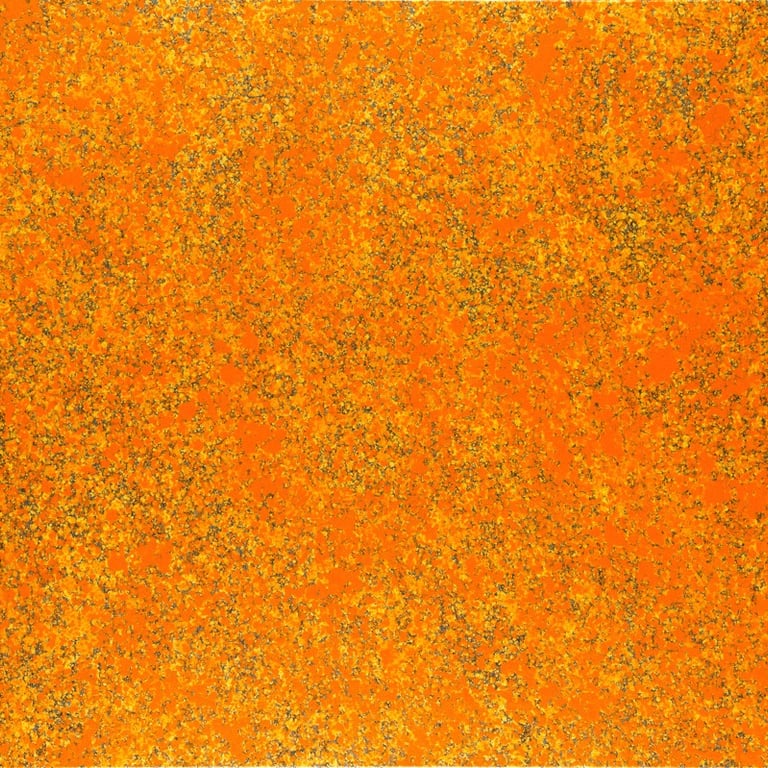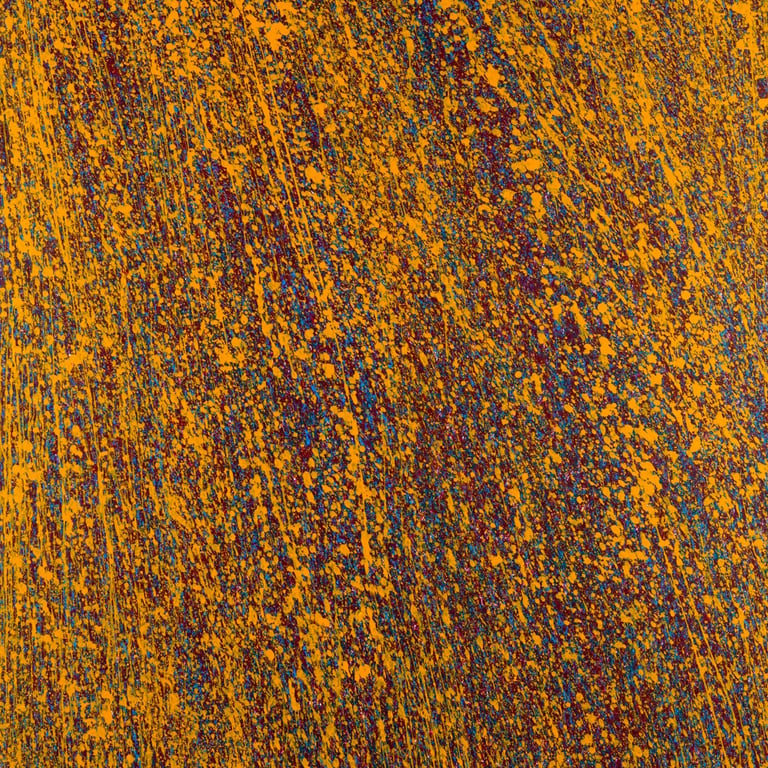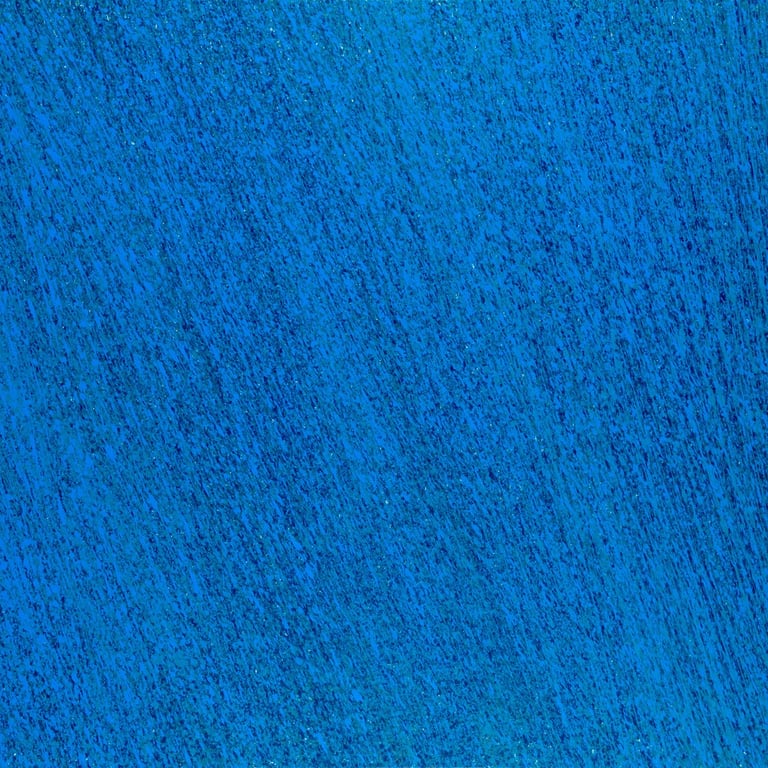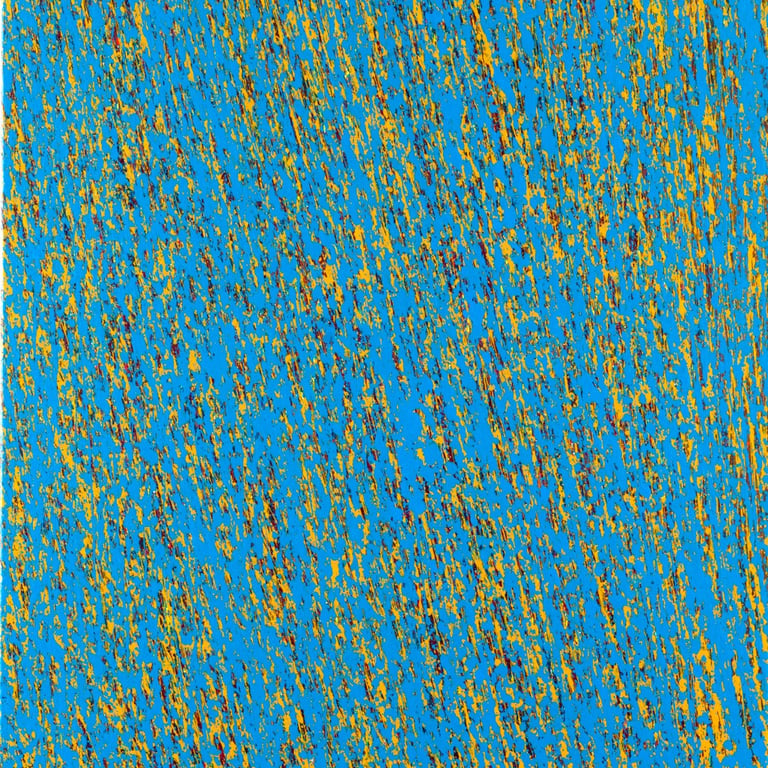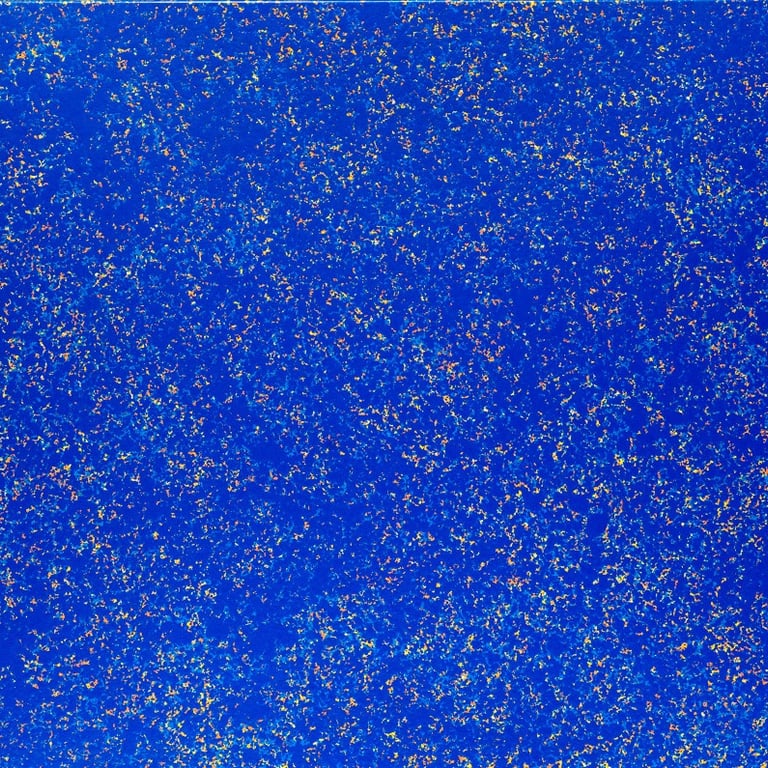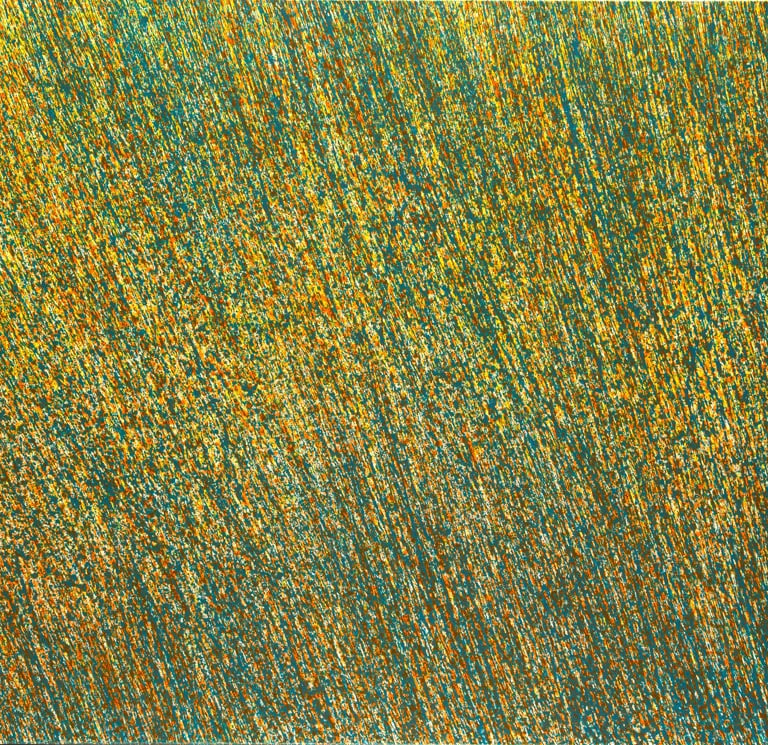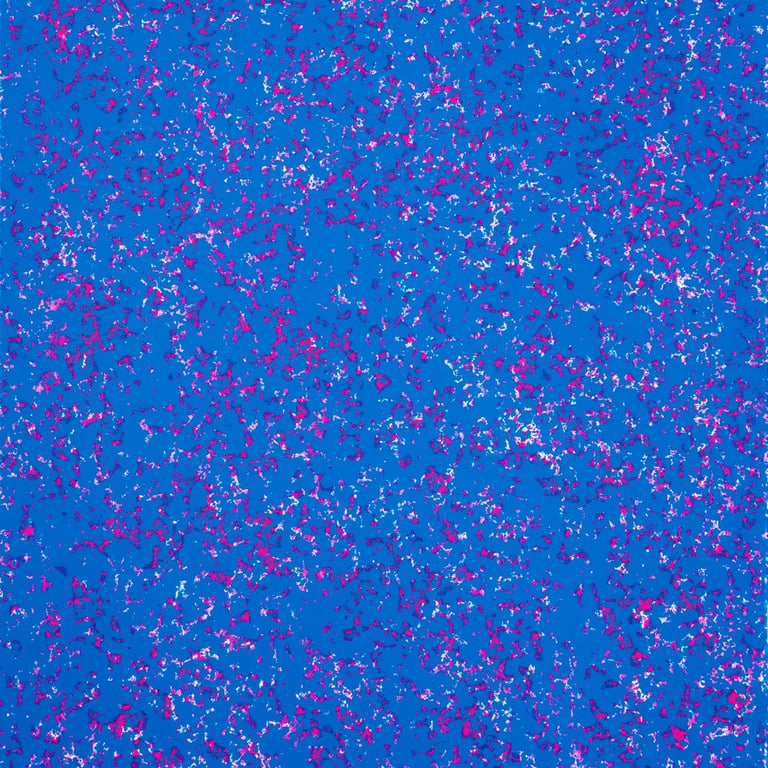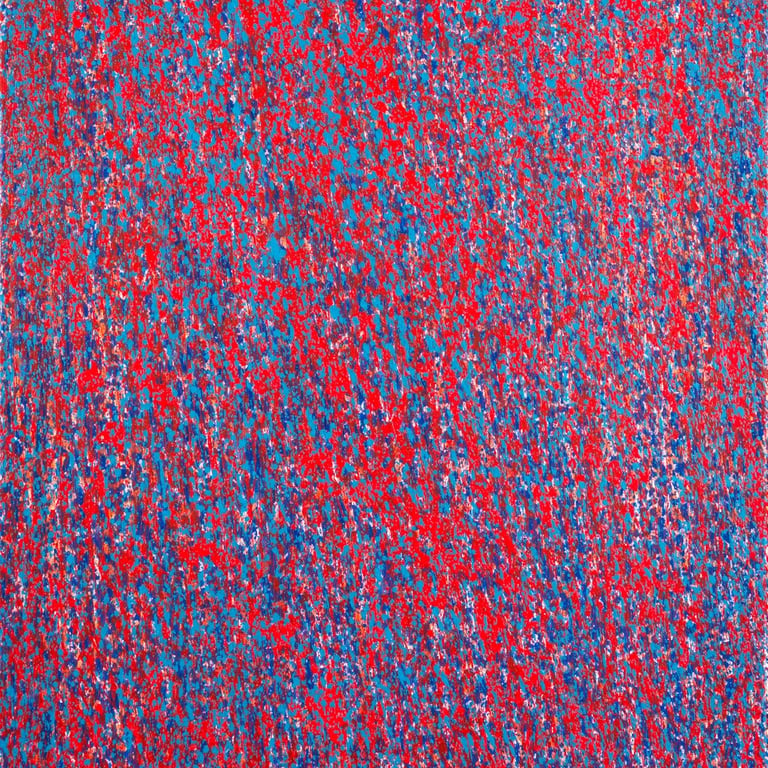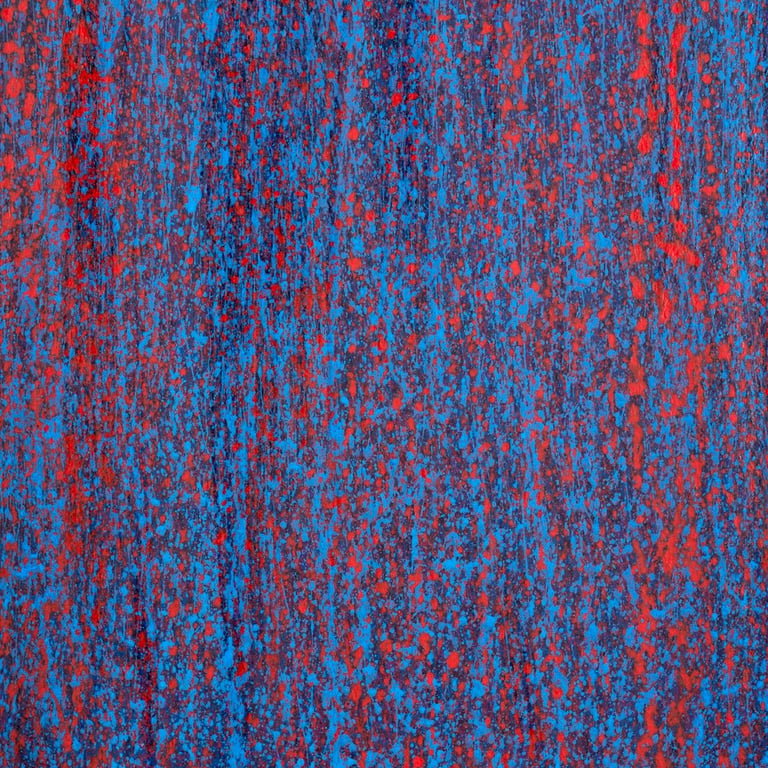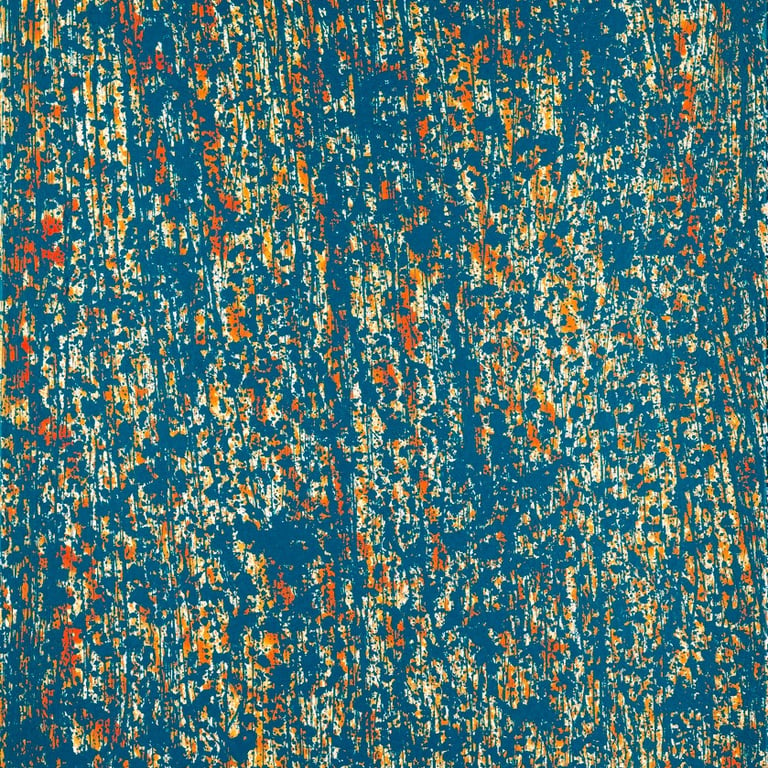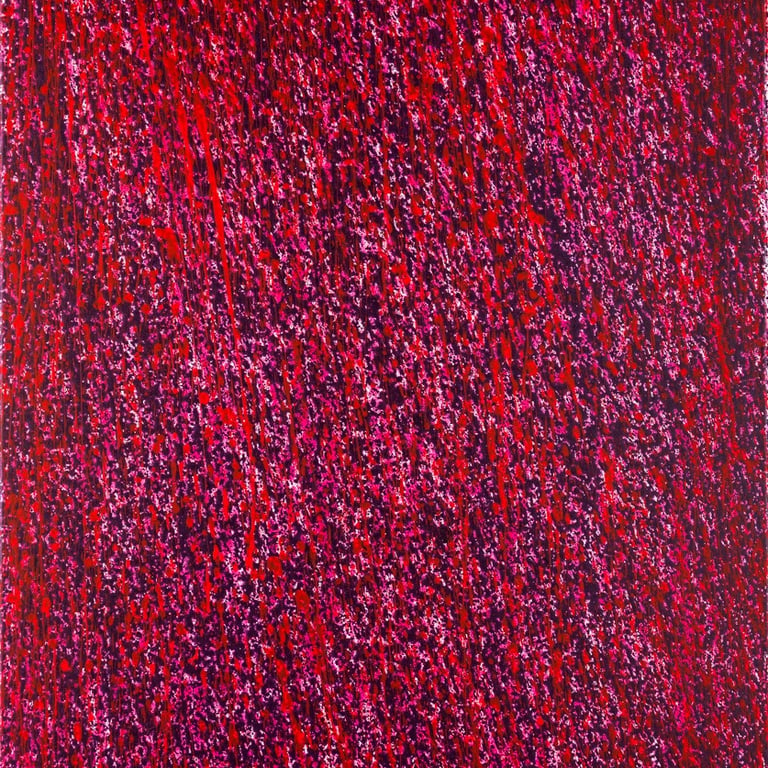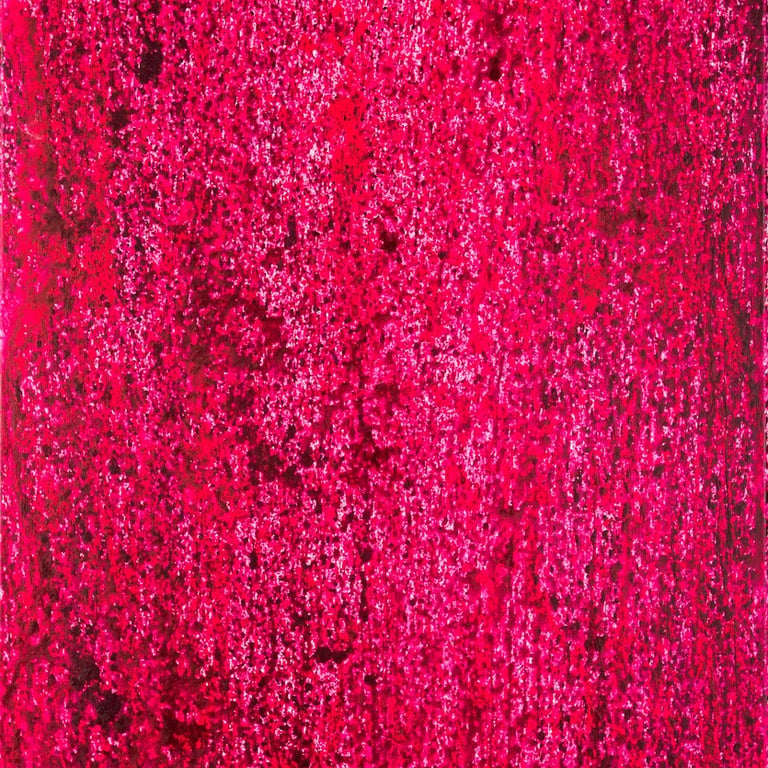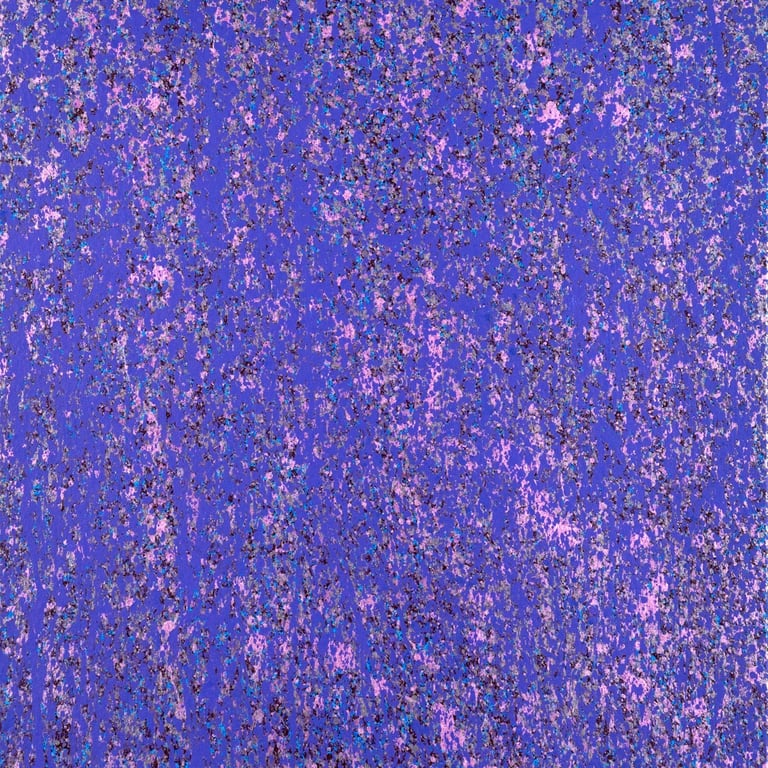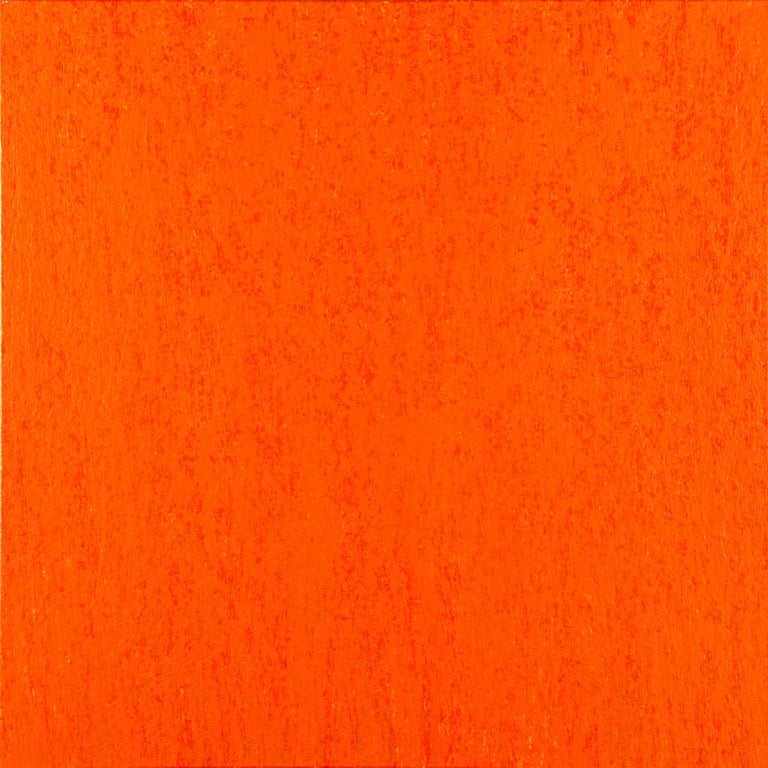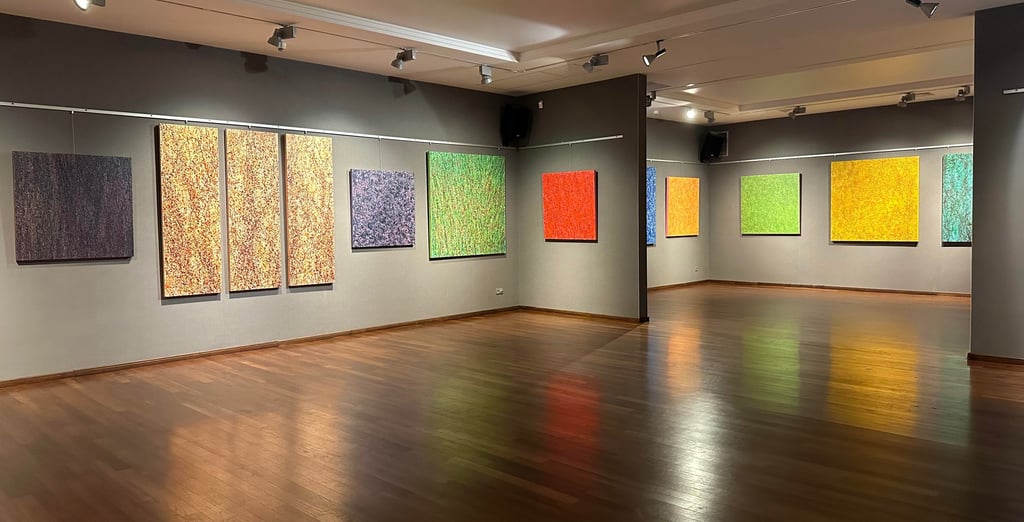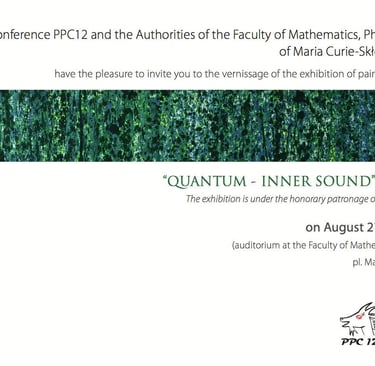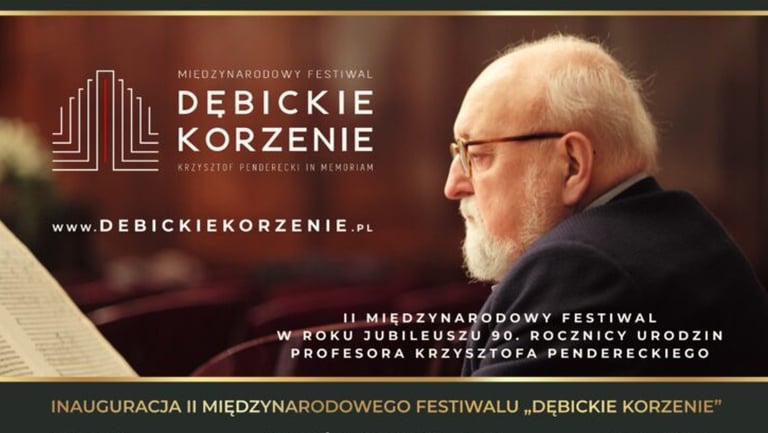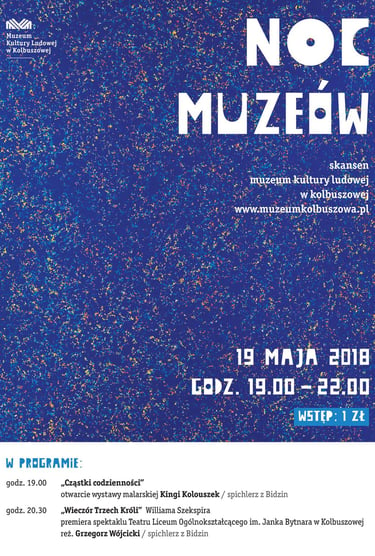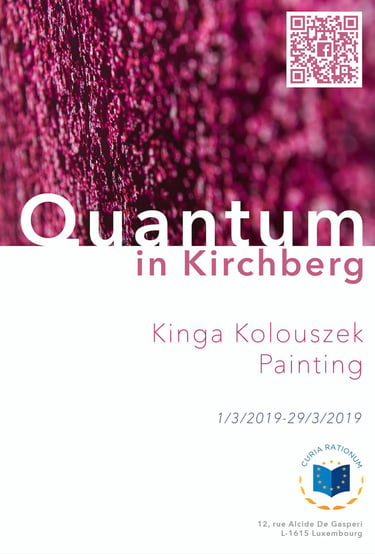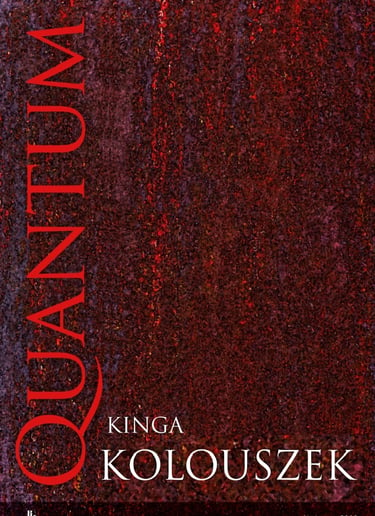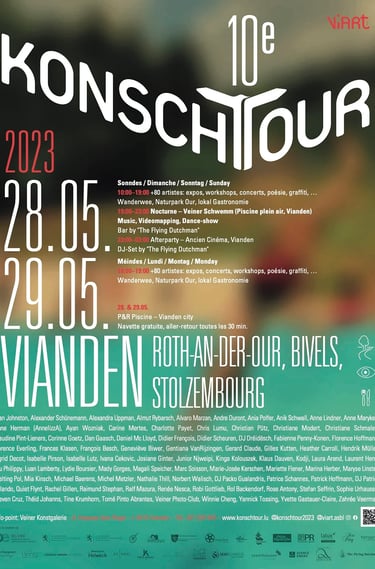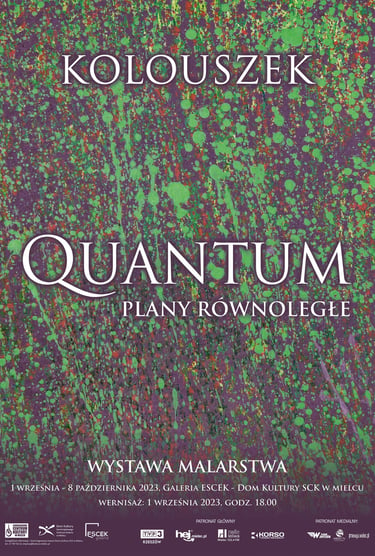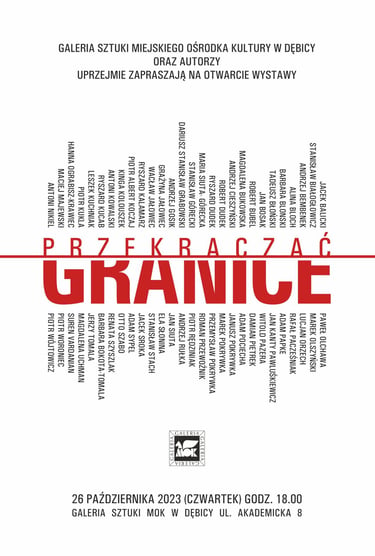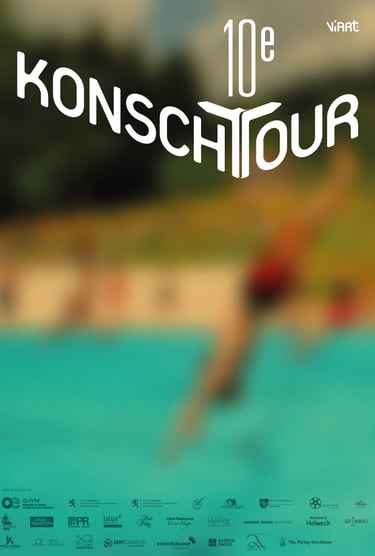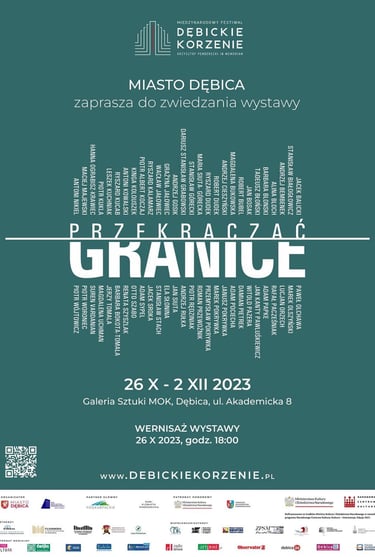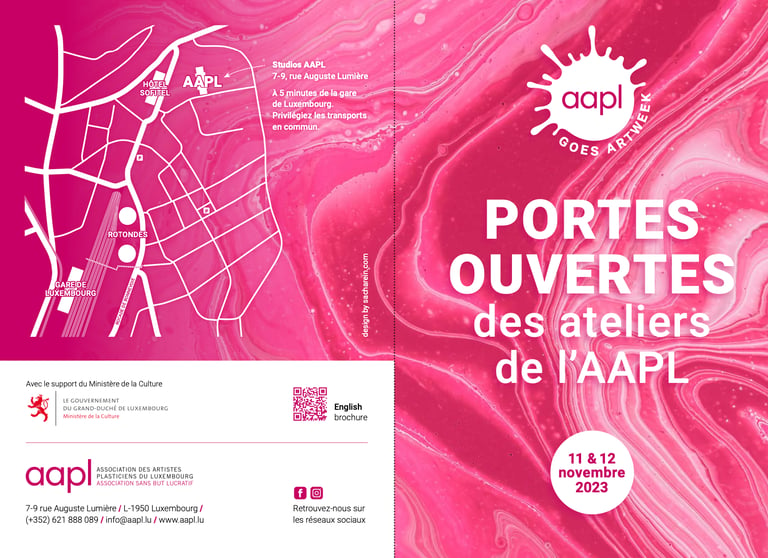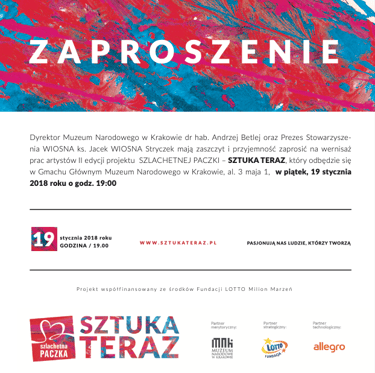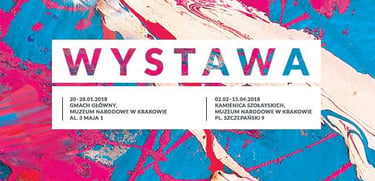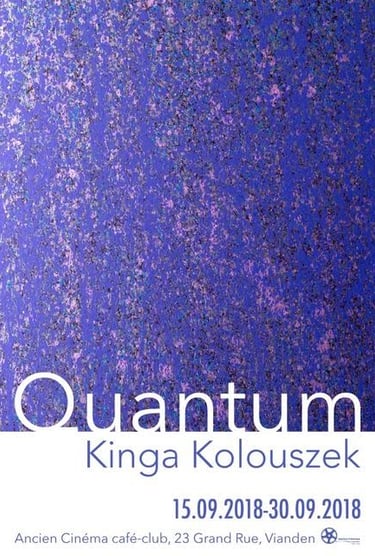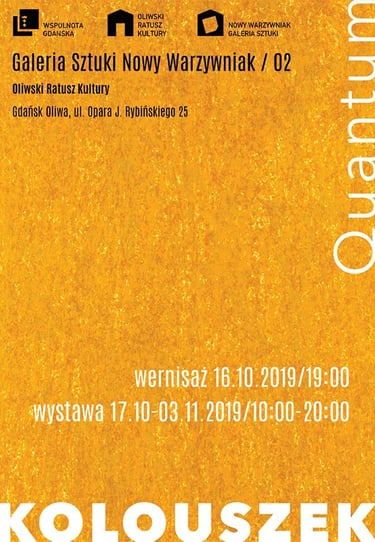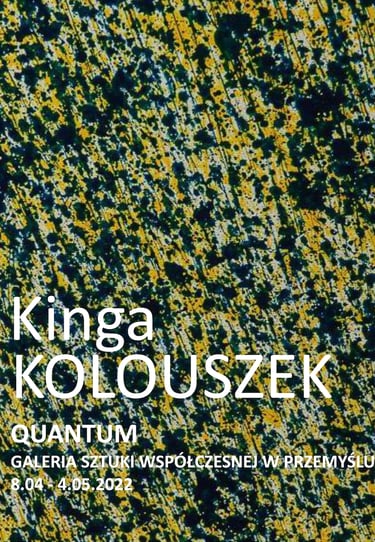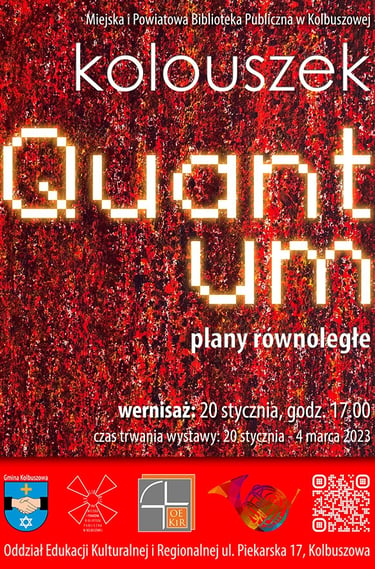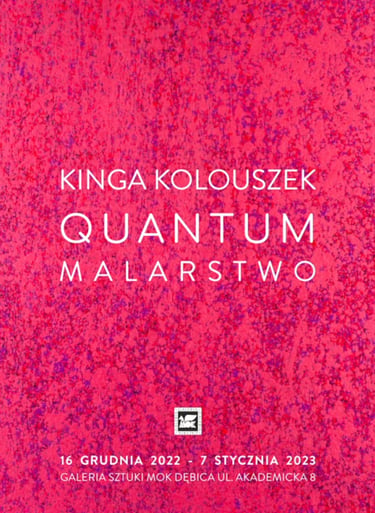
Quantum Art Collection
Quantum | Kinga Kolouszek
foto@ 2018 Skansen
Scroll down to continue your Quantum painting discovery journey.
''...beautiful and inspiring. Puts you in a cheerful mood.''
“(...) Witkacy wrote extensively on experiencing the Mystery of Existence. The feeling evokes questions: "Why am I this particular being and not another? in this place of infinite space and this moment of infinite time? in this collection of beings, on this particular planet? why do I exist at all? I could be non-existent: why does anything exist at all? why, there could be Absolute Nothingness, unimaginable even in the form of empty space, because space is only one of two sides to the dual form of Existence, and not Nothingness? how could I not exist at all before my beginning?" etc... (New Forms in Painting..., p.7).”
The Inner Sound - Introduction to Quantum paintings by J. Rossakiewicz
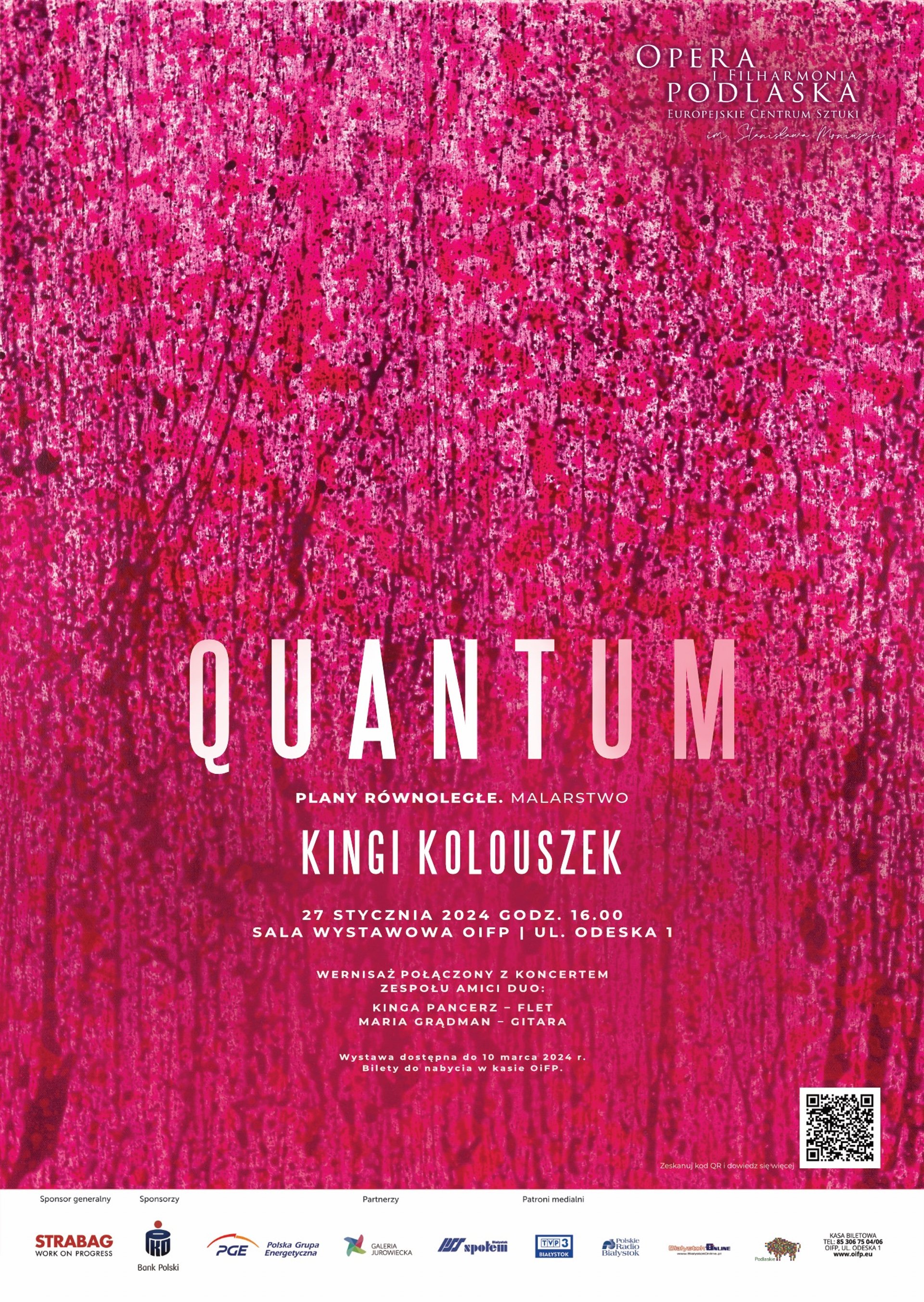
”Thank you beautifully for these fantastic musical works. Each picture plays another kind of music. There are a lot of classics, there is jazz. I have an impression that works are attacking me with sound. Everything is approaching the ideal of art. It is timeless and universal. Congratulations and thank you.”
- Jan Borek

QUANTUM MANIFESTO
Foto@ BWA Przemysl
Quantum Awakening Aesthetics!

WHY QUANTUM ?
Foto@ Ancien Cinéma
Why Anything (exists)?
The inspiration for my abstract series of Quantum paintings comes from the contemplation of the surrounding world and the incomprehensible Universe that we are all a part of. Starting from the small moving invisible particles (hence the painting’s name - ‘‘Quantum’’), the energy, minerals, to the DNA and biological cells that make us and everything around us - living and conscious. When looking at the size of the Solar System and galaxies, I find it hard to deny that some intelligent design took place - simply by observing how all of this whole micro and macro complex thing functions seamlessly. As we are more technologically developed and science tries to uncover many secrets, we do not have the final answer yet. I wanted to dedicate this colourful abstract art series to the Great Mystery of Existence that is present in me and around me. In you too.

GALLERY
Foto@ Ancien Cinéma

foto@ 2018 Skansen
”It is a great feeling to see these paintings.
I had a few associations.
I'll come back, so I can see more.”
- visitor of the ''Quantum. Parallel Plans'' exhibition

EXHIBITIONS
”Mrs. Kinga, thank you very much for the real feast of colorism. The exhibition looks great. Congratulations to you and the organisers.”
- Jan Pastula /Pastula Gallery/
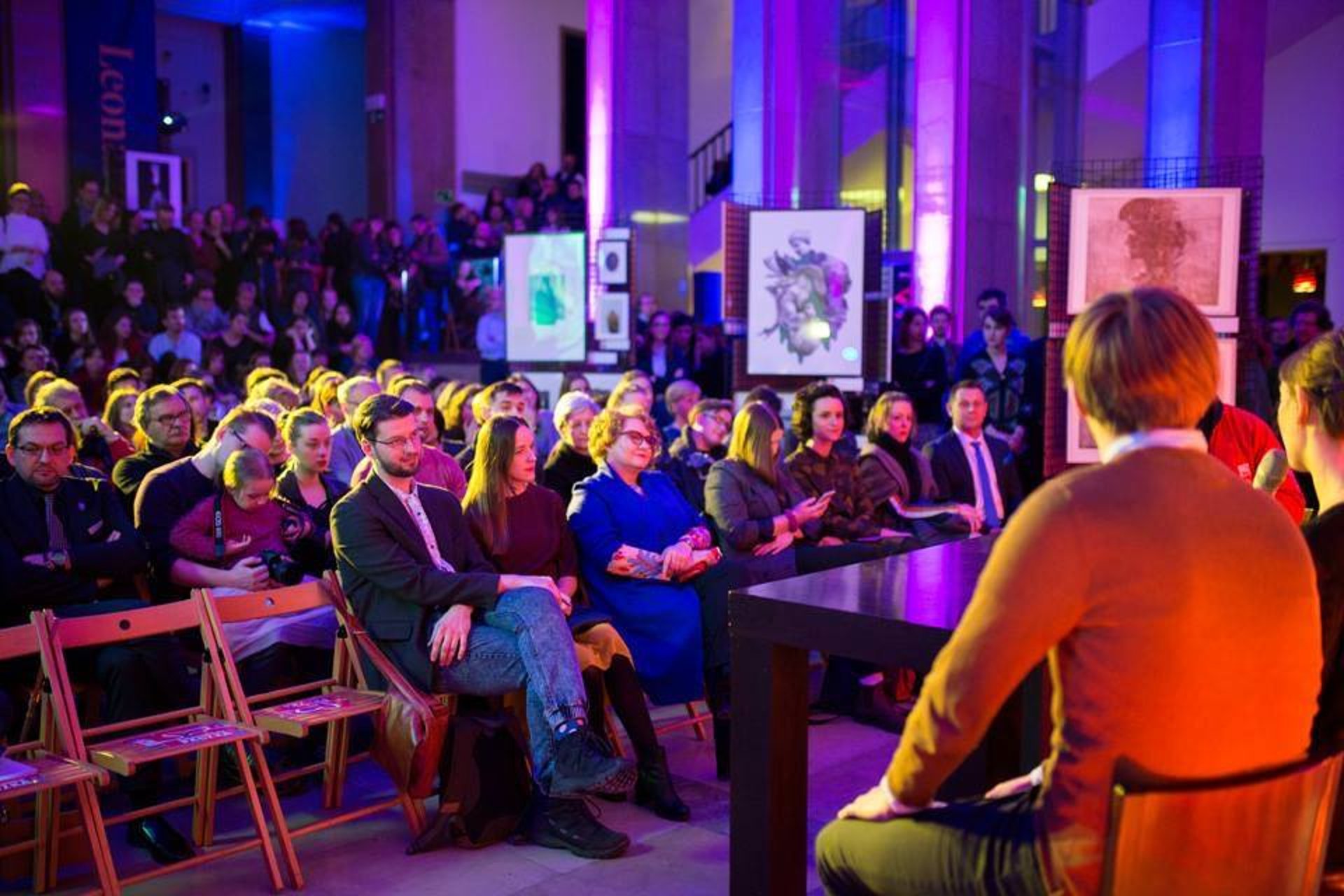
Quantum
at the National Museum
in Krakow
2018
Two Quantum paintings were selected for the exhibition and presented during Art Now Event in the National Museum, Krakow, Poland.
MNK @Sztuka Teraz
“Kinga Kolouszek shows us paintings full of life and energy. This kind of painting enables a significant amount of experiments in every work. Besides, it gives the viewer an abundance of impressions. Remarkable Painting.”
- Lubomir Tomaszewski (1923- 2018) - sculptor and designer of porcelain, founder of the Emotionalism art movement, professor emeritus of industrial design at the University of Bridgeport, CT, USA
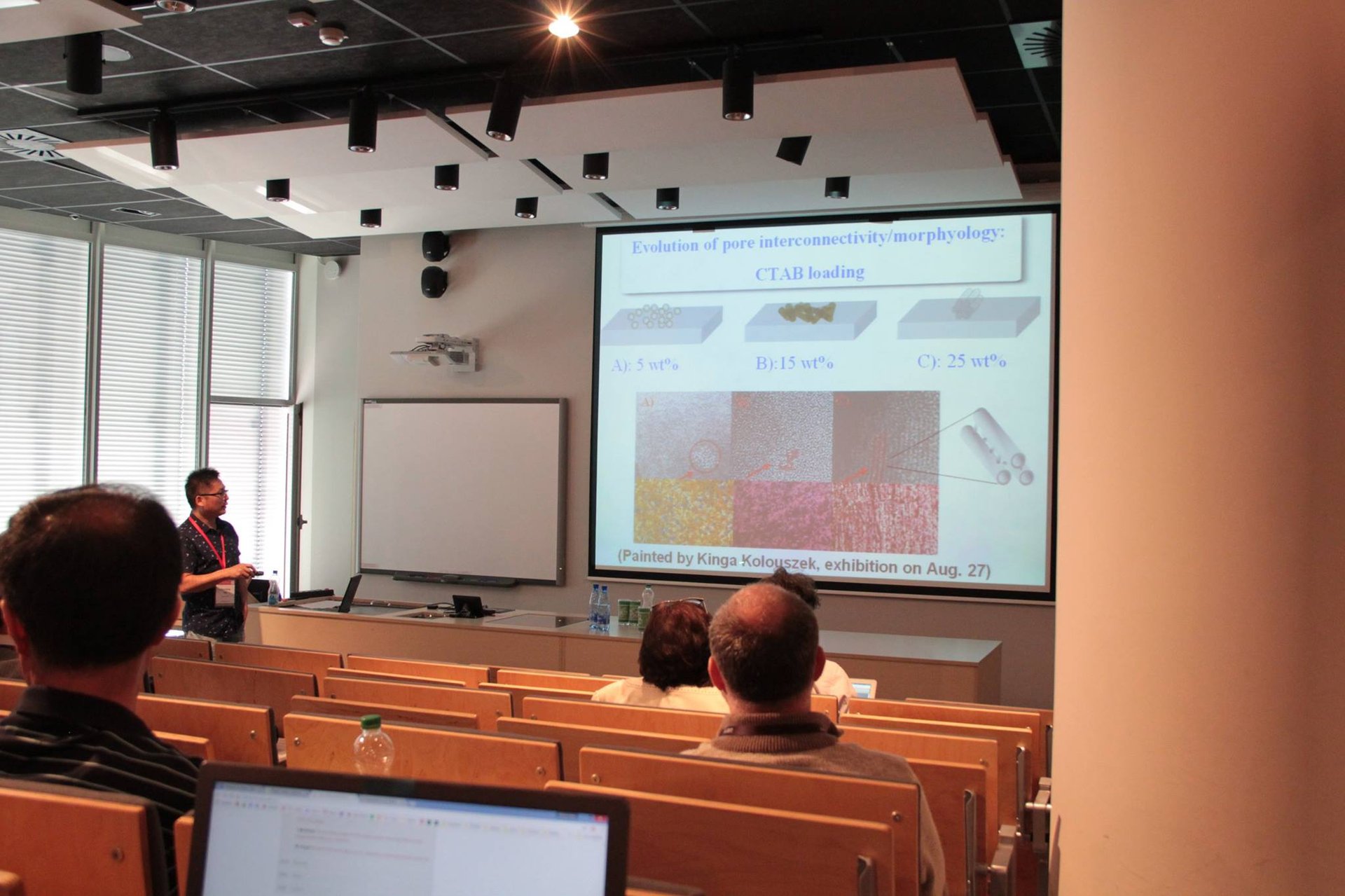
12th
International
Workshop on
Positron and
Positronium
Chemistry
2017
Quantum
& physics
conference
PPC12
On the photo the scientist
using my Quantum paintings
in his scientific presentation.
Foto@ UMCS
“(...) Looking at the paintings by Kinga Kolouszek one has impression of seeing the wave-particle duality of matter (pointed by title of the image series). Electromagnetic wave/visible light have missed its unique property used up today – colour and it became the jet of colourfull patches/quanta of energy. Composition of Kinga`s paintings can be specified from the physical point of view too. One has the impression that for a moment it stops in the frame, and sometimes becomes the flux, jet of quanta propagating in the space. As the Kinga’s pictures are almost one colour style, physically calling use a monochromatic waves, one can try to count the energy of her images influencing spectator.”
- Dr. Bozena Jasinska Associate Professor of Physics, Institute of Physics, Marie Curie Sklodowska University, Lublin, Poland

Foto@ Bachulski
“In the presence of Kinga Kolouszek's paintings the viewer feels a satisfaction derived from the experience of pure color, discrete composition and mystery of the existence of light executed in a perfect, material way. Paintings (...) cause admiration. They are great artworks. Their association with mysterious Cosmos, sensation of an affable, emotionally positive "vacuum" between paint drops caught on canvas surface signifies the readiness to accept and retain every new portion of energy. It is an impression of existence filled with kindness and love. Such interpretation of her works (based on their formal structure) makes the viewer want to "enter" these paintings. And since reason instantly suggests it is impossible - the desire is transformed into a wish to admire each painting in an enlarged version. One wishes Kinga Kolouszek's works were larger, to have a stronger, more powerful impact. These works should be monumental. Someone should commission from Kinga Kolouszek a series of such paintings, so that art full of love in its most universal dimension may be reborn in great size and style.”
- Jacek A. Rossakiewicz, ''The Inner Sound''
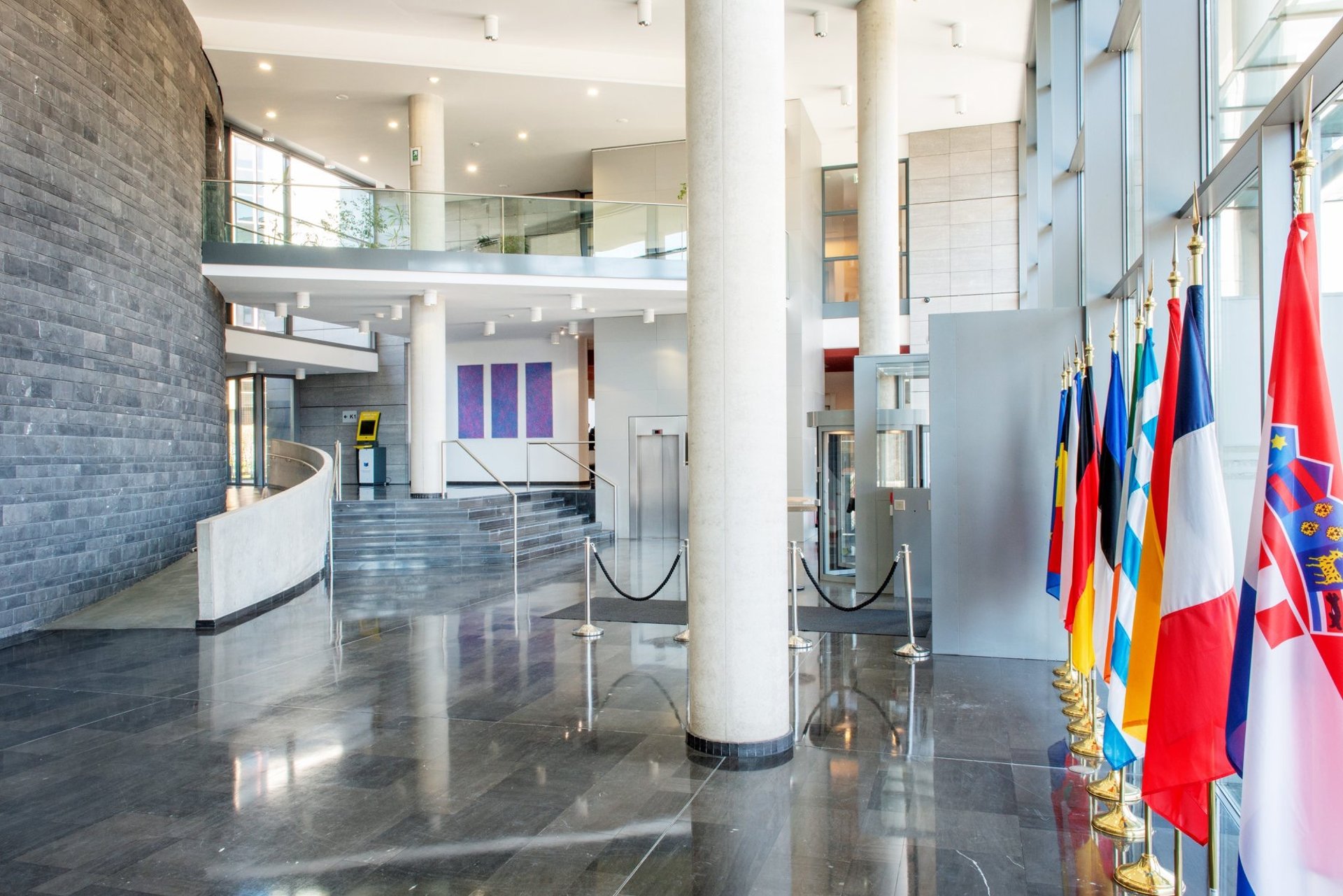
Foto@ Lalala Photo
“(...) A true artwork is born "from the artist" in a way that is mysterious, enigmatic, even mystical. Separated from him, it begins its own life, becomes a person, a separate entity animated by spirit, in a nutshell a being that exists both actually and materially. Therefore, it is no trifle and does not roam the spiritual realm by accident, but like every meaningful entity it carries energies capable of creative activity. It lives, operates and contributes to the spiritual atmosphere in question. Solely from this perspective, one must answer the question whether an artwork is good or bad. (Kandinsky, Concerning the Spiritual in Art p. 123).”
- Jacek A. Rossakiewicz, ''The Inner Sound''

Foto@ Bachulski
“(...) The results of this development were decidedly abstract paintings - and then I understood their meaning and the expression which they contained. I detected the same attention and care for detail, thoughtfully hidden behind the guise of seemingly chaotic composition. In these paintings the love of painting and colour is felt. They are characterized by the trademark of the artist. Discreet and at the same time monumental, their strange combination is fascinating, because they speak in a manner so unusual and personal as the artist’s first canvases.”
- Jacek A. Rossakiewicz, painter and art theorist
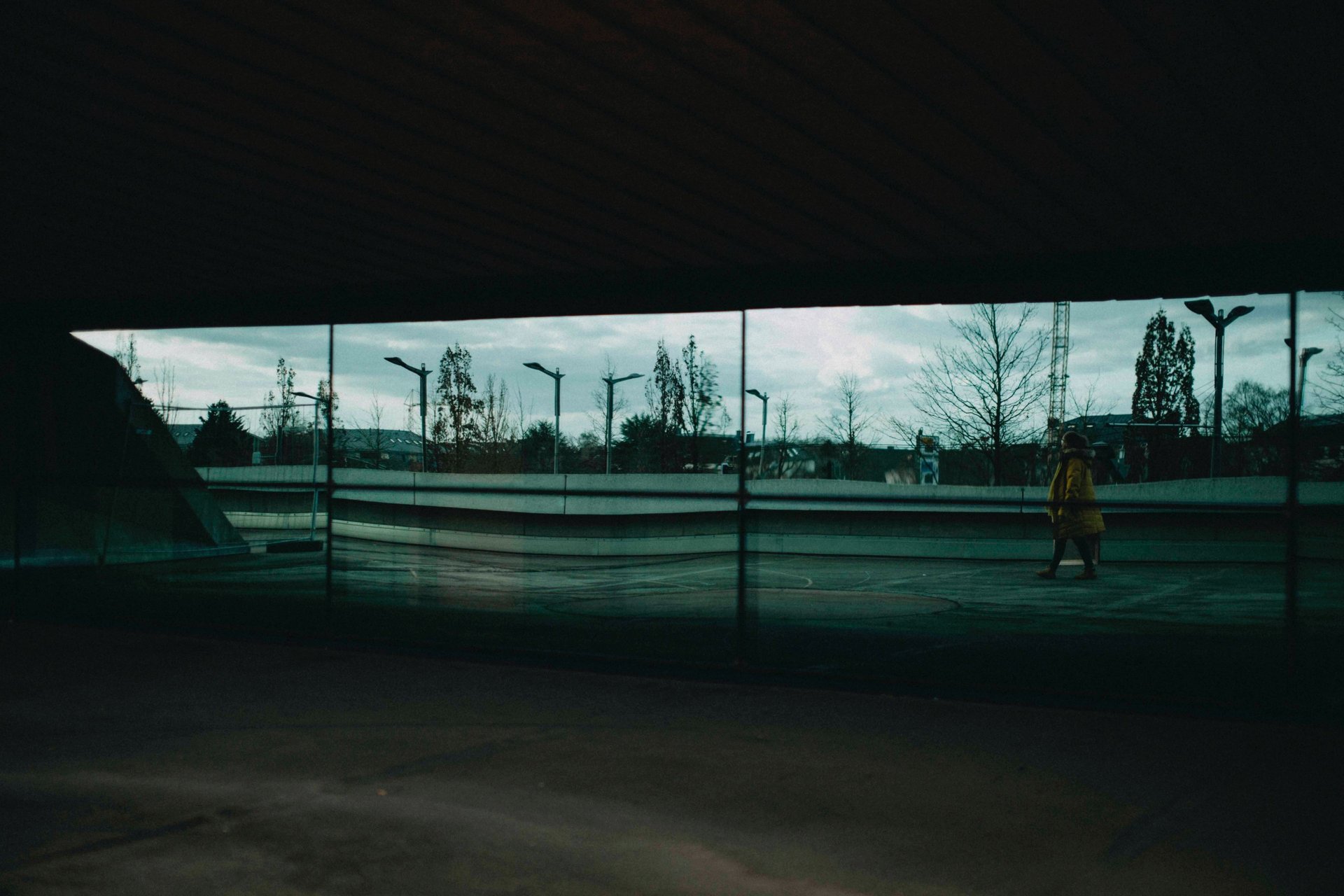
Foto@ Gabriela Kaziuk
”(...) I was very lucky to see this exposition. Each painting is special. I was impressed also by technique of the author. Some paintings are not limited just only to the surface, they go beyond the frame which made me thinking about creation method. In addition, I could stand for a long time in front of each painting. They have each own story and you feel you fall into the depth of picture. I liked it a lot! Quantum by Kinga Kolouszek is a must-see. True art!”
- Dariusz Przybyslawski
” (...) Remaining alone with the absorbing space of the image (and which undoubtedly emphasises its size), you penetrate into the depths, fly into the luminous multi-coloured space
- and you yourself become a particle, omnipresent light... .”
- Mariczka Hrehorijczuk
”The only such transcendental painting, art that is a journey trough the spectrum of colours into yourself! Meeting with the divine particle in yourself indeed, contemplation of these works eye to eye, causes a special experience in many (quantum) planes. Penetrate your own dimensions. I definitely recommend it.”
- Katarzyna Pajak

PAST EVENTS
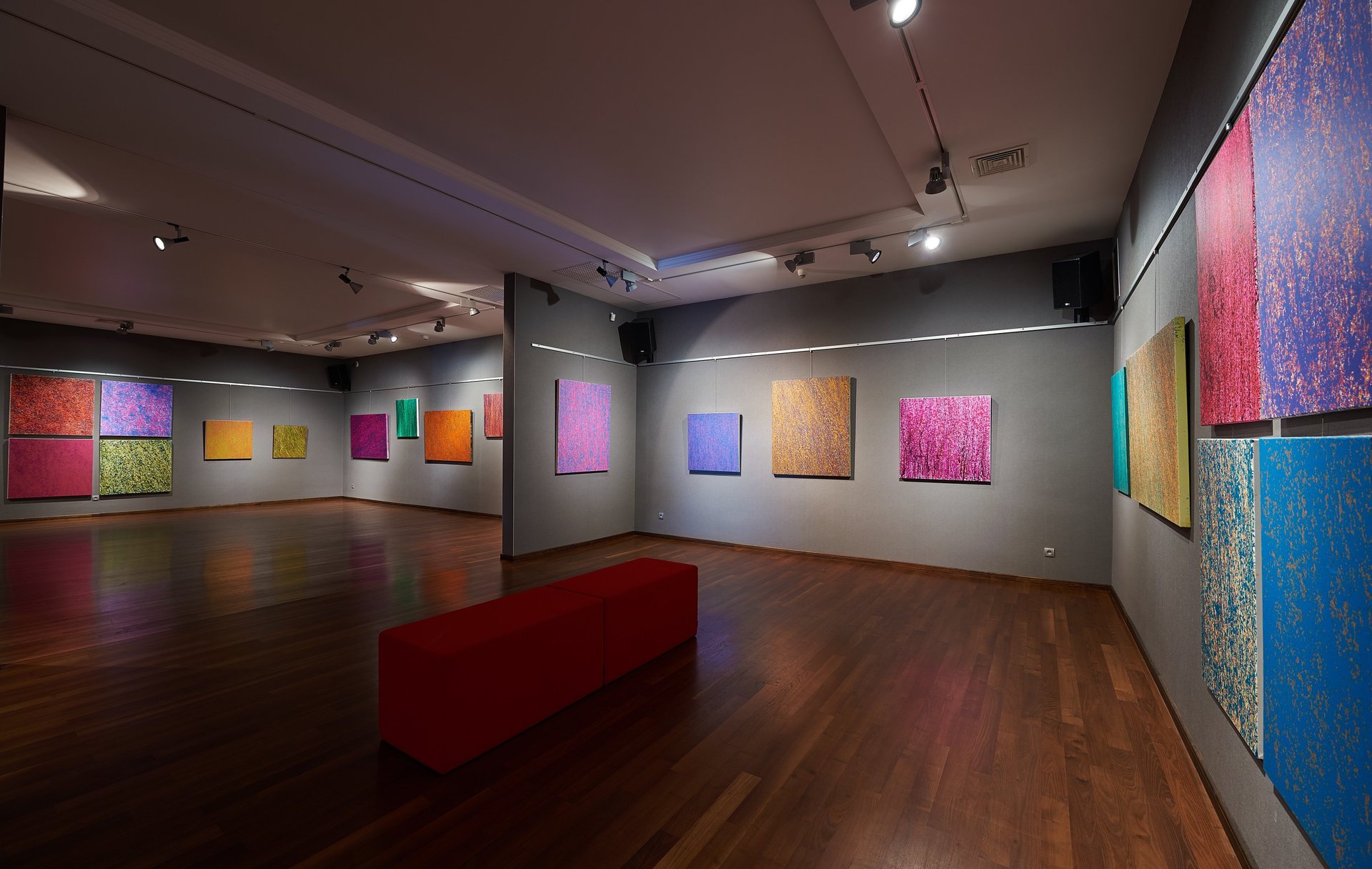
Foto@ Bachulski
'' (...) An invitation to dialogue, insight, analysis or impression. To discover your own resonance with color, form, structure. Finding yourself in the space exposing these works, finding yourself in the image and fractal. A very interesting and valuable exhibition. (...)''
-Dorota Dylo

foto@Bachulski
“(...) Comments are a window into the thoughts and feelings of the people who see our show, and the feedback helps us understand how our works are received.”
- Lubomir Tomaszewski

”I can only write: who was not present may regret. Kinga Kolouszek presents a unique world of "organic matter", which is worth seeing ... and to follow the "dot". Revelation!!!.”
***
”My first feeling when getting acquainted with the paintings of Mrs. Kinga Kolouszek was the feeling of the truthfulness of the message.
Certainly, sincerity and striving for the essence of one's own discoveries, which flows through the artist's heart, brain and hands, connects him with an invisible thread or ray of understanding with the recipient...
Impression from a distance - soft, woolly, fluffy, multi-layered. When you zoom in, this illusion disappears a bit.
Remaining alone with the absorbing space of the image (and which undoubtedly emphasizes its size), you penetrate into the depths, fly into the luminous multi-colored space - and you yourself become a particle, omnipresent light... .”
***
”First, colorful screen noise, then a cornfield seen from a bird's eye view, green horsetail, cold magma, intriguing associations, surprising visions, many interpretations, the lack of one and only point of the dominant, unknown. Backworld, worlds. I am positively surprised: it is still intriguing.”
***
”It is a great feeling to see these images. I had a few associations, I'll come back so I can see more.”
***
”Only, or and more... to see the beauty.”
***
”Dear Mrs. Kinga! I didn't realize that the world has so many colors! It is possible that we are the points, seen from space. Grains of sand in the desert, or miserable dust! Or maybe a miracle?”
***
”A world of contemplation, going beyond the known, examined area. Another galaxy, a world of space, an infinite number. Regards.”
***
”No signal on a color TV. Beautiful colours - excellent !!!.”
***
”What I saw, it made a big impression on me. A very interesting idea, something amazing.”
***
”Beautiful and inspiring. Puts you in a cheerful mood.”
***
”The exhibition in question is a great and emotional trip to the undiscovered spheres of imagination and to the parallel reality, which transfers the viewer into a new, undiscovered space. I like your work very much.”
***
”An exhibition that allows you to stop and read slowly and closely viewed. You can read a beautiful connection of colours, structures and paint spots here. A very inspiring exhibition.”
***
”Thank you for the trip ''beyond the colour of the world'' .”
***

”Thank you beautifully for these fantastic musical works. Each picture plays another kind of music. There are a lot of classics, there is jazz. I have an impression that works are attacking me with sound. Everything is approaching the ideal of art. It is timeless and universal. Congratulations and thank you.”
***
” Unusual but beautiful. In every picture you can see something different. In some I see scenes like a movie that watches with dad, how you were young and in other forests and animals in them. Incredible.”
***
”An amazing game of colors, great impressions affecting the imagination. The sides of the frame also get attention.”
***
”When we look into the images well, we can see in them fantastic dynamic figures, plants, natural phenomenons and even animals. It is difficult for me to determine the feelings during the observation. I feel excited about finding various objects and curious about the author's idea. The technique I rarely encountered, but also I find it amazing!.”
***
”A very inspiring exhibition! Great colours.”
***
”Interesting, inspiring exhibition. Thousands of preschoolers' ideas, when it comes to inspiration with colours.”
***
”The exhibition is very intriguing. A man built from pieces of matter, brain-quantum. Colors are moods, a feeling- psycho-vitality surrounding reality. Life and Death - Picture: Thoughts and transformation of space - time.”
***
”Optimistic and energizing exhibition. Wonderfully selected colours in each of the paintings. Creativity requiring precision and focus. You are a colorful bird. Congratulations.”
***
”Thanks for the time and stories told.”
***
”Thank you for the beautiful and very energizing exhibition.”
***
”Today I watched the program about black holes - in your work I found many elements of this beautiful, cosmic world - thank you.”
***
”Thank you for your inspiration. I dream about a stream. Thank you for amazing aesthetic emotions, of course for Quantum. Yours faithfully.”
***
”Inspiring exhibition. Beautiful triptychs.”
***
”Thank you very much for new impressions and knowledge. Best Regards.”
***
”One of a kind, unusual, different and overwhel-mingly strange. I will gladly come back to my thoughts to the colours.”
***
”Nice spent time in the company of a riot of colours.”
***
”I think it's not a coincidence. Exact exhibition, exact time and place. Cool.”
***
”Thank you for this moment of stopping before the work, which 'explodes' with energy, work which changes with the perspective. Like in life that consists of a million matters and our points of view.”
***

Foto@ Marek Dziedzic
”What unites us is our belief in the innate nobility of art. This ideal is difficult to achieve, because how can something so subjective and elusive be empirically defined? Yet, how can we, as artists, strive for anything less?”
(...) ”Art that involves the whole of man, who he is and who he can become. It is time for a new renaissance in art, one that will contribute to the nobility of man himself.”
- Lubomir Tomaszewski

”Quantum. Parallel Plans” are an exceptional and unique creation. The longer we contemplate these works, the more clearly we notice how they 'live and vibrate'.
The energy, momentum and colors delight. Some works are dark, as if from inside the earth or the soul. Others electrify with the lush greenery of forests and meadows, the intensity of the colours of flowers, and internal energy.
Next, the luminous and sunny yellow of golden autumn and emotional warmth. And finally, calming heavenly blues, giving relief and liberating creativity. Physics and painting - a unique combination of spinning particles. It's worth seeing and looking forward to the next works.”
***
”An unusual type of painting. For me, calming, beautiful selection of colors. Thank you for the possibility of watching something new in this world. Thank you for the work put in this artistic work.
~BEAUTIFUL~
I wish you further success
with thanks ... .”
***
”Each picture - a different story. A journey through different possibilities. Interplay and dissonance, and yet always the same language of harmony. Anchoring in a form that gives unlimited possibilities for intentional interpretation.
An invitation to dialogue, insight, analysis or impression. To discover your own resonance with color, form, structure. Finding yourself in the space exposing these works, finding yourself in the image and fractal.
A very interesting and valuable exhibition. The gallery is also prepared for this type of exhibition. Congratulations to the author and organizers and I wish many beautiful events.”
***
”Nothing at first
And soon ... a blaze of colors,
meadow, leaf, heaven,
but from very close.”
***
”Thank you! For a moment of stopping and looking at a section of nature in peace /for me/ for the beautiful colours, for the opportunity to develop my imagination. Beautiful!”
***
Reading reality with colour ... "Quantum" - Kinga Kolouszek
“Entering the world of the Artist's painting imagination, I notice a great fascination with the cosmos. Its size, variety and beauty. The story about the world of which we are a particle, quantum, an element brings out extremely original artistic realizations.
A rain of colors, even a downpour, which emanates with strong feelings - love, tenderness, peace, gentleness, at other times passion and anger. Kinga Kolouszek paints emotions on canvas with great sensitivity. Her works are gates that open the door to our imagination. The artist guides us through the mysterious spaces of her sensitivity. Where is it leading? To a forest fragrant with pine needles, a blossoming cherry orchard, a garden bathed in sunlight, to a meadow full of flowers, to take us back into outer space and show our life from the perspective of heaven.
''Quantum'' is for me a journey into the depths of the world and a beautiful attempt to understand it. Reaching the level of elementary particles and admiring the genius of God. Kinga Kolouszek looks at the world, appreciating its beauty and ephemeral character. Zooming in allows you to see the particle that forms a whole with others. This careful look is an expression of reflexion on the condition of the contemporary world, an expression of genuine care and love.”
- Sylwia Cieszynska

Foto@Bachulski
”After reading the information in the catalog,
I looked differently at your painting ...
The background like the abyss of the cosmos, adds energy and at the same time silences... .”
***
”The only such transcendental painting, art that is a journey trough the spectrum of colours into yourself!
Meeting with the divine particle in yourself indeed, contemplation of these works eye to eye, causes a special experience in many (quantum) planes.
Penetrate your own dimensions.
I definitely recommend it.”
***
”Beautiful paintings, I immediately associate with the image of relic radiation from the cosmic background! (2.7?K).”
***
”Energy ...
Dynamics ...
Infinity…
Thank you for impressions.”
***
”Great art! Quantum series by Kinga Kolouszek is a unique art delivering unusual experience to the active observer. It takes one into a depth and space of scientific thoughts, releasing an emotional energy between the human and traces of various colours. These are the marks of quantum. The smallest piece o matter physics which is a piece of energy at the same time. It is a synergy and the difference of both at the same time.
I was very lucky to see this exposition. Each painting is special. I was impressed also by technique of the author. Some paintings are not limited just only to the surface, they go beyond the frame which made me thinking about creation method. In addition, I could stand for a long time in front of each painting. They have each own story and you feel you fall into the depth of picture. I liked it a lot!
Quantum by Kinga Kolouszek is a must-see. True art!”
***
”I am honored, I'm delighted.
Beautiful reference for my soul where a scrap sees subjugation of the scale of these works. How my soul perceives them and experiences literally.
Thank you very much, I see my emotions a lot.”
***

Foto@Gabriela Kaziuk
”Mrs. Kinga, thank you very much for the real feast of colorism. The exhibition looks great. Congratulations to you and the organisers.”
***
”These works are no less than gorgeous. The colour breathes with depth that imbues life into the canvas and opens a door to a quantum colour appreciation. Stunning, beautiful and actively heart-stopping, in the most life-affirming way. Rothko, Jackson Pollock spring to mind.”
***
”Following Amazon of colors is pure pleasure for me. Green and shades of yellow are to me a personal experience.”
***
”I admire, observe, read, search and I am inspired. Thank you for the few minutes I spent here.”
***
”Children from the kindergarden "Happy Child" thank you for they were able to see all colors of happiness in one place.”
***
”Great exhibition.”
***
”I do not understand this
But I don't have to like it.”
***
”I am delighted with a blaze of colours.”
***
”Thank you for a beautiful, colorful and very energizing exhibition.”
***
”The exhibition gave me energy on these November days.”
***
”Beautiful, magnetising colours.”
***
“Thank you for the exhibition, which caused a lot of discussions and searches…
It was nice to meet you.”
***
”Beautiful work''
''I really like the work''
''Finding your artistic path. Good luck.”
***
”Color - in a mixture of hues.
Contrast - in the saturation of parallel planes. Sound - in a swirling space. Hell and Heaven.”
***
“The colors that attract, are warm, absorbing with their abstraction. Interesting. I admire.”
***
“If poetry expresses feelings, then painting must provoke. An image must evoke thought in the person viewing it and make an impression on him, just like a piece of music. This is what Your Quantum is for me.”
***
“Beautiful works, great exhibition, aesthetically done.”
***
Thank you for sharing with me your experience and your impressions!

BIOGRAPHY
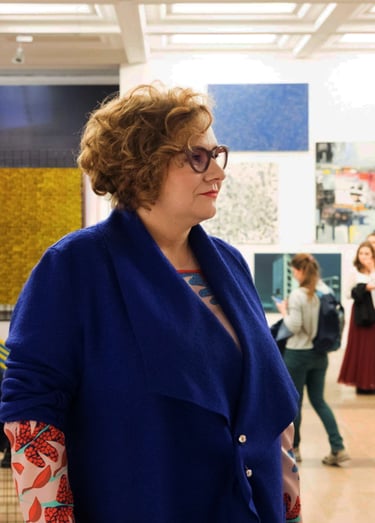

majored in graphic design and painting at the European Academy of Art in Warsaw, where she received her diploma in 1998. Since then Kinga participated in numerous group (mainly Emotionalists art movement led by Lubomir Tomaszewski) internationally as well as individual exhibitions, focusing mainly on the figurative art (particularly portrait), however leaning more and more toward pure abstract form.
In her Quantum paintings series inspired by quantum physics, Kinga explores the colour and contemplates reality on a molecular level: it is a conscious reflection on the structure of the surrounding world, on those of its aspects that remain beyond the reach of our limited perception.
Kinga Kolouszek
MNK 2018 @LalalaPhoto

Foto@ Lalala Photo
“(...) “Quantum” is a descent into the microscopic world, an attempt to describe the reality of things through its smallest constituents - atoms and elementary particles. While looking at these works and admiring their dynamism and colour aspects, one should bear in mind that they result from a conscious reflection on the structure of the surrounding world as well as on those aspects that remain beyond the reach of our limited perception.
By inventing a new artistic form for herself, Kinga Kolouszek not only explores her creative potential and searches for new means of expression, but also muses upon the harmonious movement at the core of our existence. It is therefore an experiment regarding the painting matter as well as an artistic attempt at the interpretation of the surrounding world.”
- Pawel Jagiello, art critic and art historian
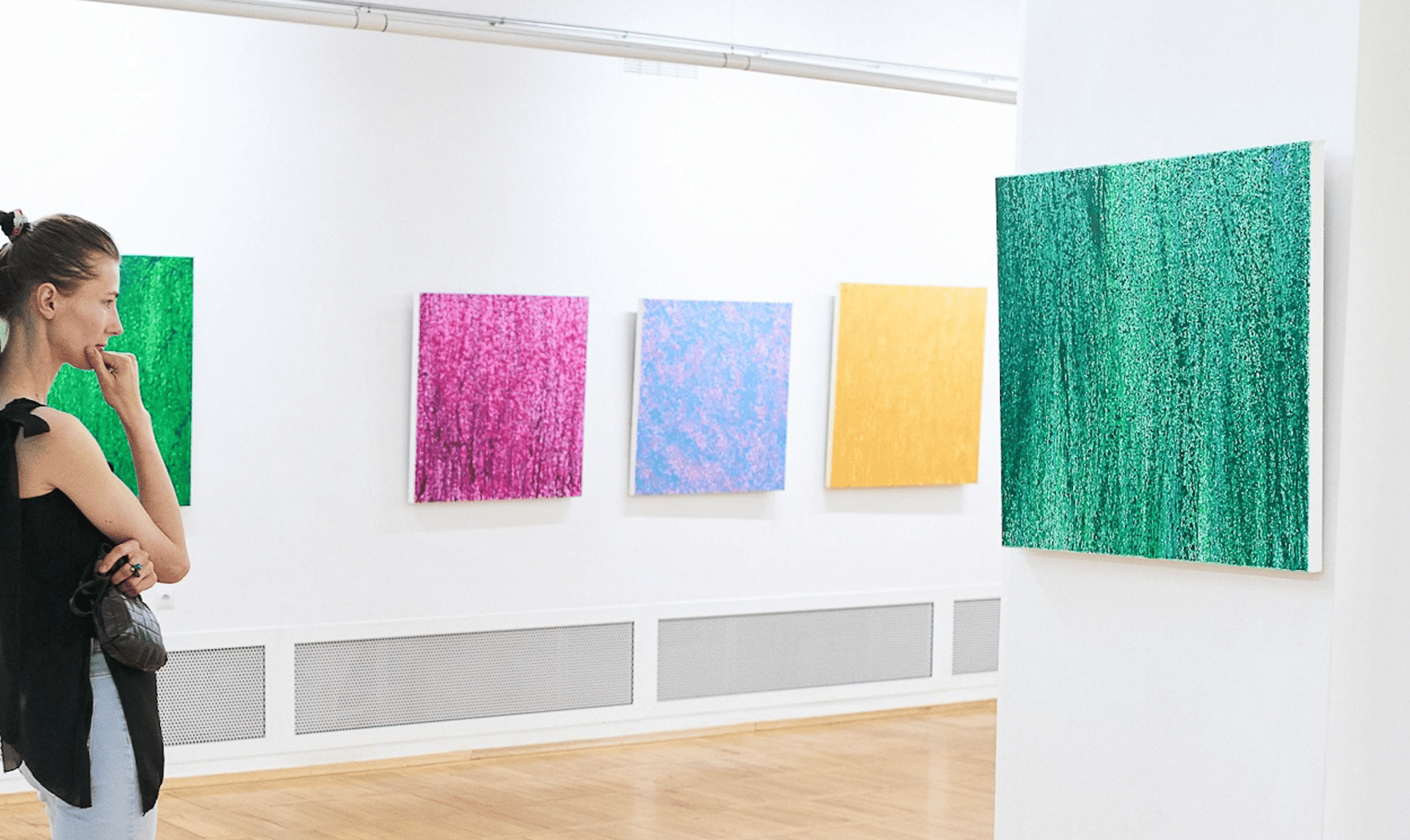
Foto@ Bachulski
“Kinga Kolouszek is an artist with many gifts. She works with the same ease in the fields of oil painting, watercolour, drawing, printing and graphic design. Her works captivate with the balance they draw between vision and observation. Lately the artist has devoted herself increasingly to abstract painting whereby she created complex and profound works. ...”
- Jean-Marc Schmidt, “The Romanticism of tomorrow”
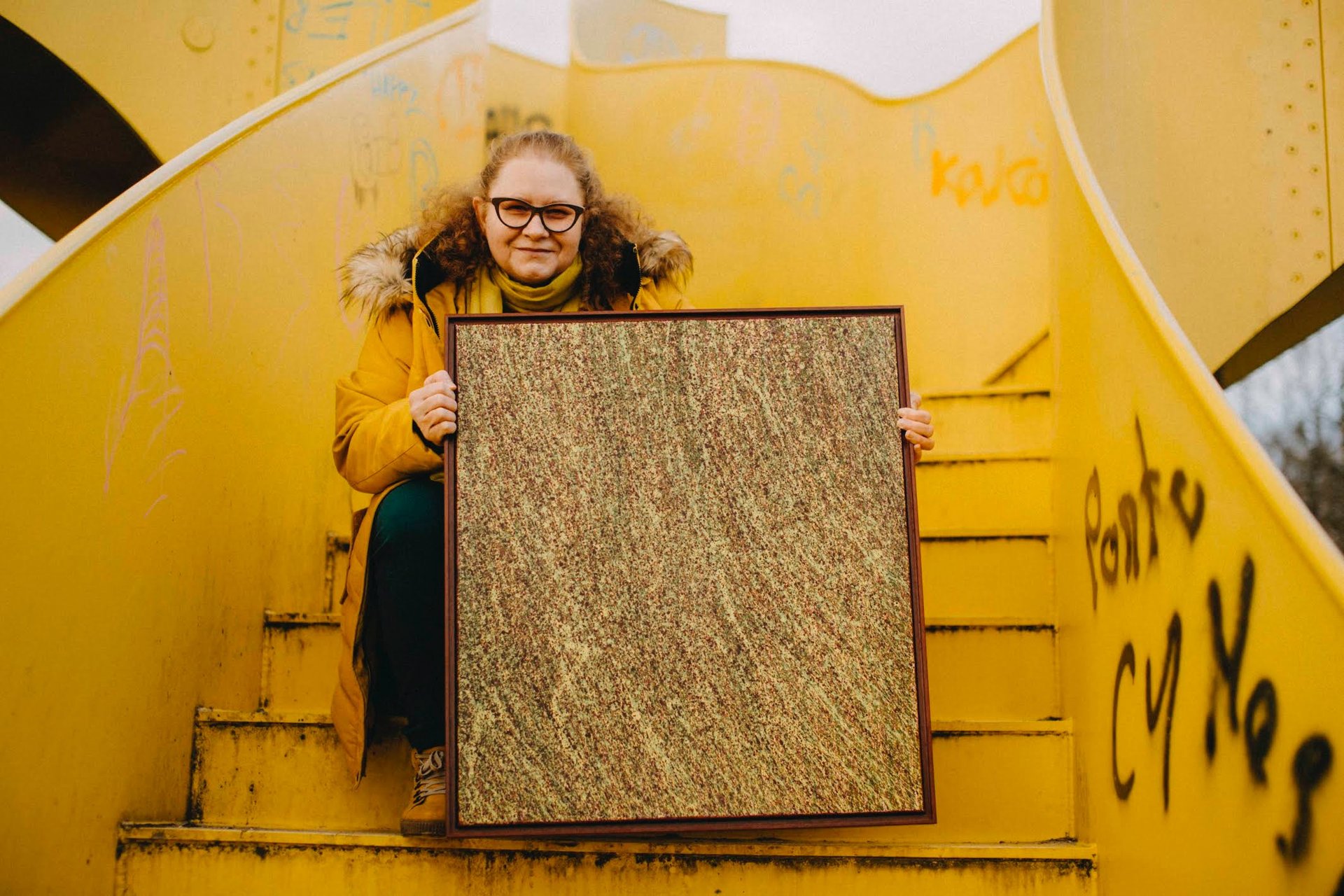
“As a man who has devoted his whole life to the most clear headed science, to the study of matter, I can tell you
as a result of my research about atoms this much:
There is no matter as such.
All matter originates and exists only by virtue
of a force which brings
the particle of an atom to vibration and holds this most minute solar system of the atom together.
We must assume behind this force the existence
of a conscious and intelligent mind.
This mind is the matrix
of all matter.”
- Max Planck
Florence, Italy
1944
''I regard consciousness as fundamental.
I regard matter as derivative from consciousness.
We cannot get behind consciousness.
Everything that we talk about, everything that we regard as existing, postulates consciousness.”
- Max Planck
The Observer
25 January 1931
Foto@ Gabriela Kaziuk
© Copyright 2021, Polacy.lu
Project funded by Embassy
of the Republic of Poland
in Luxembourg
Jacek Andrzej Rossakiewicz
Introduction to the series of paintings by Kinga Kolouszek entitled QUANTUM
At the beginning of the 20th century two artists wrote completely independently two exceptionally noteworthy general art theories. The first one comprised the reflections of Wassily Kandinsky (1866-1944) in Concerning the Spiritual in Art (1911), later elaborated on in Point and Line to Plane (1926), the other was developed by Stanisław Ignacy Witkiewicz (1885-1939) in New Forms in Painting and the Misunderstandings Arising Therefrom (1919) and its supplement Aesthetic Sketches (1922).
Far from diminishing Kandinsky's achievements - an artist appreciated during his lifetime, also for his first book, which was treated with due respect initially by few, but later by far more readers - one must admit that Witkacy's works, his New Forms in Painting and the Misunderstandings Arising Therefrom especially, offered a completely new research perspective for artists, art philosophers and critics, as well as those viewers who were well-oriented in art and sensitive to its functions. Stanisław Ignacy Witkiewicz's achievments concerning his Theory of Pure Form in painting were not recognized until after his death. Paradoxically, it was partly due to the 20th century philosophy regression. Artists, like most intellectuals, abandoned for the most part their traditional philosophical aesthetic deliberations and concentrated on creating artistic programs instead. There, they formulated their goals and observations. Their intention was to reject tradition and transform art.
Witkiewicz's view was different, since as an artist he relied on introspection and as a philosopher he continued the tradition of aesthetics without any conscious discrepancy between these two disciplines - this means Witkiewicz used philosophical terms to describe his thoughts and sensations. Witkacy based his theory not only on philosophical reasoning but also on his own experience: Since we usually go from introspection, based on the assumption that there will be a certain number of individuals who feel the same as we do, and we can show to those who feel different, though unrewarding at first, the paths to new experiences and sensations. (New Forms in Painting and the Misunderstandings Arising Therefrom, p.16).
A new type of theory - a program - more dynamic, aimed towards expansion of art into a new reality, and being also a confirmation of artists' autonomy, has replaced aesthetics - traditional search for wisdom - and prevailed since the beginning of the 20th century. A program always offered people something new, something that stood or was supposed to stand in opposition to tradition and previous trends. Even though a program's aim was absolute novelty thus reflecting man's naive idea of progress, its function was positive. It triggered a pursuit to master new means of expression and conquer new disciplines for art. Artists verified their assumptions in practice and drew conclusions which served to pose new questions - form new programs - often by the next generation. It was a tumultuous social revolution in art, verification of aesthetic stipulations through materialization of ideas. [1].
A road to artistic autonomy and equalization of aesthetics with other areas of man's social life found a more emphatic expression in the work of Joseph Beuys (1921-1986), his sculptures, actions, installations, and his complex theory: from Wilhelm Lehmbruck's (1881-1919) idea of Social Art to his own concept of Social Sculpture expressed among others in Appeal for an Alternative (1978) in an unprecedented way.
During 1970s art and its functions underwent a thorough analysis and it turned out that what is aesthetic is connected with the nature of the world and man, that beauty is not about reproducing what is perceived as "beautiful" or decorating this world but about shaping our thought, feeling and interaction. Beuys wrote: Before asking "WHAT CAN WE DO?", one must ponder "HOW SHOULD WE THINK?" so that the phraseology applied to mankind's highest ideals propagated today by every party's agenda does not spread further, sharply contrasting with life practices of our economic, political and cultural reality. [2].
Beuys proclaimed the necessity of acting without violence, preferably through parliamentary work, based on common electoral initiative, cooperation of many social movements and organizations, brought together by the idea of UNITY IN DIVERSITY. He wrote: A collective electoral initiative of the whole alternative movement is only viable as an ALLIANCE of many autonomous groups which build their relations with one another as well as the public on the concept of ACTIVE TOLERANCE. What our parliaments need is the liberating idea and vitality of such a union, a UNION FOR A NEW DEMORACY. [3]. To educate students and adult people, Joseph Beuys and Heinrich Böll (1917-1985) founded the Free International University and Initiative for the Foundation of Action Third Path, which Beuys wanted to accomplish on the Fringes of Europe, i.e. wherever capitalist and communist systems had not dominated societies completely, e.g. Ireland and Pre-Martial-Law Poland.
In his social creation Joseph Beuys consistently eliminated the distinction between aesthetics, ethics and economy. He revealed the unity of the world under a single criterion: RESPONSIBILITY. The basis for this criterion is spiritual beauty born from love, compassion and kindness. Love and compassion result from spiritual inspiration and revelation of truth. Inspiration, in turn, derives from a search stemming from awareness of the mystery of existence - Paul Gaugin's (1848-1903) notorious Where do we come from? What are we? Where are we going? It is the same Mystery of Existence Stanisław Ignacy Witkiewicz wrote about as the source of metaphysical emotions. Sensing the Mystery of Existence is the birth of what is human in man. Human egoism, egocentrism, materialism and self-satisfaction have little in common with metaphysical emotions and sensing the Mystery of Existence. Far more important here are empathy, care and common responsibility for the whole of Existence expressed e.g. through the idea of love of neighbor and love of God. [4].
That is how, though only in terms of ideology, the revolution in the 20th century art occurred. Artists' activity no longer dealt only with the fragment of reality assigned to them by other social groups such as, historically speaking, aristocracy, clergy, bourgeoisie or party bureaucracy. Art creators decided they were responsible before the world not only for their works and formal ideas, but also for the shape of the world and the nature of man's perception of it. Artists became free (they were raised) from a function subservient to the existing social elites to the role of autonomous and equal builders of the society. Since Joseph Beuys with all their power of aesthetic expression artists have been interfering with the world and the nature of man's perception of it. And what is aesthetic maybe should also denote what is good and valuable. Men of art can and in a sense it is their civic duty to fight for a vision of the social world and argue with the representatives of other social groups that often destroy beauty existing in the world for the sake of expediency.
It is no accident that in the era of globalization this struggle became the essence of contemporary art, but art suffers in result as it loses its autonomy and recently even its right to exist is questioned. Aesthetically necessary and independent effort of the artists would be replaced by following the directives of state or supranational bureaucracy or other informal or anonymous but influential social groups. After a period of growth in importance art undergoes the process of destruction. As part of a civilisational strife fought in the modern world, art is threatened by formal reductionism. It would serve to illustrate and advertise socially destructive trends and become just another production department, its aims reduced to simple economics, to the principle of benefit and taxation. Minor artists find their way around in such a world and fulfill these tasks looking for personal gain. Among conscious artists, however, grows a willingness to restore art's meaning, in the name of ideas that form its core and have positive civilisational functions.
The change in art's situation that occurred after the formal revolution warrants changes in approach to aesthetics and art criticism. There is no reason to repeat old names of artistic programs with prefixes like neo-, post- or anti-. The so-called postmodernism, anti-art or post-art fail to breathe life into art debate. It requires a new deeper perspective referring to the tradition of aesthetics, i.e. a search of truth and wisdom, beauty and kindness. A desire to rediscover what art is or what it should be is a question about its essence, not its outward manifestations easy to define for those in favor of art programmes - still it is (usually) misleading in proper evaluation and appreciation of many prominent artists' work.
Having briefly described the current, rather complex situation in art, let us return to the previously mentioned writings, especially those regarding aesthetics by Stanisław Ignacy Witkiewicz, who like no other explained the essence of an artwork and its creation, having derived it exactly from his experience of the Mystery of Existence and from metaphysical emotions - just as Kandinsky did from human spirituality. According to Witkacy, the concept of the Mystery of Existence had a clearly defined genesis rooted in the history of philosophy (analysis of that idea is not the subject of this article, see note 1). What is important is that it was an ambiguous term. Witkacy understood by it a number of real mysteries: the question about existence of humanity and an individual's place in it, about the structure of the universe and matter. He referred to the existence of conflicting elements joint together or separate phenomena forming a single entity, as unity in diversity. It was also a manifestation of the Mystery of Existence. He wrote: the Mystery of Existence is unity in diversity and its infinity in both smallness and enormity with simultaneous limitations to each Individual Being. (New Forms in Painting..., p.6). Whereas a metaphysical emotion is a directly given sense of personality unity. Directly given meant given like colors and smells. It was a spontaneous experience, not intellectual speculation. It appeared in man's relations with the world. They could also be achieved through integration of any qualities (diversities) into unity. Unity in diversity is a form of manifestation of the Mystery of Existence, whereas metaphysical emotions are a way of experiencing it that is common to all men.
Witkacy wrote extensively on experiencing the Mystery of Existence. The feeling evokes questions: "Why am I this particular being and not another? in this place of infinite space and this moment of infinite time? in this collection of beings, on this particular planet? why do I exist at all? I could be non-existent: why does anything exist at all? why, there could be Absolute Nothingness, unimaginable even in the form of empty space, because space is only one of two sides to the dual form of Existence, and not Nothingness? how could I not exist at all before my beginning?" etc... (New Forms in Painting..., p.7).
From here, there is just one step to explaining the nature of an artwork. An essential feature of artworks is unity in diversity regardless of what elements constitute the diversity and how unity is achieved. (New Forms in Painting..., p.10). A work of art is an organized entity, a construction of arbitrary elements created by an artist experiencing a strong metaphysical emotion. A metaphysical emotion, or a directly given sense of personality unity contributes to such an arrangement of elements that they form a construction of unity in diversity. Such structure is an objectification of the unity of a creator's personality - it is a work of art. By receiving unity in diversity contained in an artwork a viewer undergoes a profound aesthetic experience synonymous with a metaphysical emotion. He experiences the unity of his own self. Creating an artwork, i. e. expressing unity in diversity is an aim in itself since it can be achieved only while under the influence of a strong metaphysical emotion. In an artwork conceived this way, form and contents become synonymous. The contents are the relationships of constituent forms which make up the highest value of unity in diversity, which is at the same time an expression of the Mystery of Existence. Witkacy wrote: the form of an artwork is its only significant value - its form and contents are not separate, they constitute a single absolute entity. (New Forms in Painting..., p. 11).
The ontological assumption of duality of existence in Witkacy's philosophy as Time and Space became the basis for his distinction of two types of Pure Art: painting and music. No arts, except for painting and music, possess the specific discourse of pure qualitative elements, none of them, at our stage of development, can offer an objectified construction of pure qualities independent of any utility (...) detached from our own and other personalities. (New Forms in Painting..., p. 16). Pure qualities, also referred to by Witkacy as simple, indivisible into components, are sounds and colors. They are the elements of Pure Form. Pure Form is construed from these elements and constituting unity in diversity. The essence of Pure Art is Pure Form.
Witkacy created a simplified graphic model (New Forms in Painting..., Fig. 1) to illustrate the phenomenon of artistic creation. The model consists of four concentric circles. In the centre, there are Metaphysical Emotions, then Life Emotions, the intellect and finally in the last circle - the realm of Pure Form. A work of art occupies a certain area on the perimeter of the last circle.
An artist is a man whose strong metaphysical emotions - experiencing his own identity and autonomy (the wave emerging from the common centre of the circles) - result in a need to objectify the feeling of unity of personality in the construction of simple qualities (i.e. an artwork). Metaphysical emotions do not "dissolve" in the realm of life emotions, or intellectual deliberations, but after popularization within these two areas of man's psyche (which is necessary and unavoidable) they force him to create an artwork, the objectification of unity in diversity. Creating an artwork requires an appropriate ratio of these four elements. Deficiency or overbalance of one of them can spoil the aesthetic impression.
An artwork is a creation that exists in reality, which makes it a direct link between the creator and the viewer. The latter can receive unity in diversity contained within the artwork and undergo a profound metaphysical experience: However paradoxical this may sound, we claim that a requirement for a deep, aesthetic satisfaction is the inability to conceptually realize why a given combination of qualities forms a single entity. (New Forms in Painting..., p. 16). A crucial moment of deeper aesthetic satisfaction is the very integration of the given unity in diversity; that is the essence of (...) the understanding of a given artwork. (New Forms in Painting..., p. 18).
The ability to render a painter's vision as well as authenticity in the use of formal devices causes an artwork to emanate its power - the power of metaphysical emotions it encapsulates. That is why the verification of a good painting is the viewer's reaction: A good painting is one which evokes through its Pure Form a metaphysical emotion in at least one man. Unfortunately, it is the only possible definition. (New Forms in Painting..., p. 88).
In certain cases, understanding of an artwork by the viewer could be the same as that intended by the author. It depended on the number of elements, their character and structure. In painting these elements were color spots, they were the creative material. Witkacy distinguished three elements in the art of painting: color, composition and approach to form. Color is the basic simple quality, composition is the way of constructing many (minimum two) color spots, while the element of approach to form is the manner of applying paint to canvas, from the simple act of covering plains with paint to glazes and impastos. The nature of color spots was usually determined by visions of the forms of external world. The kind of visions, in turn, was shaped by life emotions involved in the creative process and their intellectual processing - as long as it did not result in a final resolution and loss of emotional potential. Complexity of the composition could be arranged or made more dynamic by dimensional tensions, more legible the more they were connected with shapes of the real world. We see therefore that elements traditionally associated with artistic content played a vital role in Witkacy's theory, without them creating an artwork was impossible but their significance was limited by Witkiewicz to the creative process. In a work of art they were a necessary but inessential element.
Please pay close attention to this fragment as it is here that Witkacy "rejects" the implantation of content in art. This content can also be introduced here, which allows us to form a universal aesthetic theory - see: Art as Freedom [4]. More importantly, the Theory of Pure Form enables us to roam the territory of art with a precision specific to philosophical thought.
By limiting the functionality of meaningful forms Witkacy could support both the argument that painting is a Pure Art and the formal nature of the whole theory. Its significance diminished, the role of visions of the external world and dimensional tensions in the composition of a painting fitted into Witkacy's art concept. Shapes of the external world dictated dimensional tensions to compositional masses. With their natural lack of ambiguity they facilitated the kind of integration of a given diversity into unity that the author assumed. An artist's task is to make us understand this unity of a given diversity exactly the way he intended. (New Forms in Painting..., p. 18). It occurred through grouping of individual elements into larger compositional masses and infusing the whole piece with dynamic balance stipulated by good composition. The priority of color, composition and approach to form in Witkacy's theory meant he could accept as works of pure art the paintings of Paolo Uccello (1397-1475), Sandro Botticelli (1445-1510) and many other artists irrespectively of the ideas behind their works, which until Francisco Goya's times (1746-1828) usually depended on the commissioner's wishes.
Witkiewicz's approach to painting was an essential validation of abstract art. Simple qualities; color spots are in fact the substance of abstract painting. By appreciating the role of external world forms in painting, he did not fall behind abstractionists but outstripped them with his theory. He stated the irrelevance of their aspiration. He accurately described its expected conclusion: Despite all the irrelevance of objects, we believe that programmatic removal of them is inappropriate. (...) Apart from the fact that all agendas exclude honesty, which is the most important aspect of any creation, exclusion of objects, e.g figures, from the composition deprives masses of shapes of what we call dimensional tension. Of course there may be one, two, or three people who do not need it and can create ingenious works at the same time; we only mean the programmatic nature of such renunciation, since artificially depriving the initial vision of any true resemblance to this or that object must involve purely intellectual work, which suggests either inefficient strength of the vision or an excess of the intellectual component in a particular artist. (...) The above movement must finally arrive at a coldly calculated ornamentation. (New Forms in Painting..., p. 79). This coldly calculated ornamentation soon became known as geometric abstraction. Supporting abstract painting with something otherwise known: geometry, was a sign of dwindling creativity, beginning of a downfall, but Witkacy realized there may be one, two, or three people who do not require forms of the real world in paintings and who can create ingenious works at the same time without losing their sincerity - though such artists are difficult to find.
A painter of this kind was surely Jackson Pollock (1912-1956), who based his work among others on techniques of paint application successfully used in the cave paintings of Lascaux discovered in 1940 (and earlier in Altamira cave discovered in 1879) and although freedom to arrange the canvas facilitated his task of paint application by employing the force of gravity (canvas spread on the floor - the freedom of pouring paint straight from a can, etc. - action painting), and not by working against that force, which artists of the Magdalenian culture (17 000 – 15 000 BC) had to do when painting on cave walls and ceilings with hollow bones and brushes made from moss and hair. Pollock's paintings overflow with energy, which swirls within the mass of forms placed on canvas and burst into chaos of abstract dimensional tensions leaving no space for rest during the contemplation of each work. It is a singular (individual), one might even say "baroque" splendor hastily executed, with a 20th-century method - though while employing the most spontaneous techniques the artist claimed that: he never lost control over what he was doing. Such a claim reveals the artist's commitment to his painting material; ideological and formal unity of the creative act; the design and material implementation. Pollock left when his radical method had led painting to the limits of intentional creation. [5].
The other such painter was Marc Rothko (Marcus Rothkowitz, 1903-1970), who developed his painting in opposition to Jackson Pollock's painting techniques, by eliminating dimensional tensions and painting gesture in favor of color, which appears in his works only as autonomous spots and highest value. Simplicity (minimalism) of the composition is coupled with the simplest, discrete approach to form visible only on the edges of each painting as the spot of color fades slightly "adjusting" to the size of the canvas or making space for another color, e.g. along the border of two or three colorful plains. Marc Rothko executed the priority of color by eliminating not only composition and approach to form, but also visibility of paint. He displayed his works in isolated, poorly illuminated spaces, sometimes in semi-darkness. As a result, what emerged from the dark space was only pure color while its medium: paint-covered canvas remained in the background, so as not to annoy with its concreteness. That is how pure color triumphed in painting.
The European equivalent of American abstract expressionism was the so-called tachisme. The term derives from French la tache, which means just a spot, and was first used in 1889 to describe the works of impressionists. In general, the term has a minimal cognitive potential since every painting is a composition of color spots, as described by St. I. Witkiewicz. The term tachisme was used as a catch-all to denote the art of fauvists, or works inspired by creative automatism, i.e. the hope that a work of art will spontaneously come into being as a result of impromptu actions. (Many artists did not know or forgot the words of Jackson Pollock, who assured that he never lost control over what he was doing). European tachisme was dominated by a dramatic approach to form, typical of men. At times, the painter's gesture was accompanied by aggression and "struggle with paint" on canvas, which did not always translate into aesthetic value. Later, the term was applied to the so-called matter painting (informalism), whose prominent representative was Alfred Manessier (1911-1993).
Today, pure color and passion of painting are clearly present in the works of Kinga Kolouszek, especially in the series called QUANTUM. The first piece from the series, painted in pink, is evocative of joy and downright childlike spontaneity: openness and rejection of all restrictions. The second work, Quantum Violet of slightly vertical composition is a confirmation of the chosen path and strengthening of the decisive, pure color which clearly dominates the whole piece. The vertical composition of these paintings, close attention to form, control over the painting matter basically distinguishes them from the aggressive European tachisme of the 1950s. Kinga Kolouszek's paintings create harmony, predominantly of color and composition. They display great respect for color and painting matter. It is a good creative attitude for the renewal of art and its autonomous effect - derived from the very essence of painting.
It is worth quoting fragments of Kandinsky's writings to better illustrate the rules guiding art and its internal laws: A work of art is always the child of its time, often the cradle of our emotions. Each stage in cultural development creates its own art which will never reoccur. (...) We cannot feel the same as the ancient Greeks did, or live their inner lives. (...) There is, however, a similarity of artistic forms, at the base of which lie very convincing circumstances. Indeed, the same inner tension, the same moral and spiritual atmosphere, pursuit of similar goals, essentially already formulated before but later forgotten, a similarity of inner climates - all can logically result in the use of forms which in previous ages successfully served the same purposes. This partially explains our liking and understanding, our deep affinity to primitive art. Like us, those mature artists endeavored to convey through their art what is intrinsically significant, automatically discarding as it were all that is only accidental and extrinsic. (Kandinsky, Concerning the Spiritual in Art p. 23) [6].
A true artwork is born "from the artist" in a way that is mysterious, enigmatic, even mystical. Separated from him, it begins its own life, becomes a person, a separate entity animated by spirit, in a nutshell a being that exists both actually and materially. Therefore, it is no trifle and does not roam the spiritual realm by accident, but like every meaningful entity it carries energies capable of creative activity. It lives, operates and contributes to the spiritual atmosphere in question. Solely from this perspective, one must answer the question whether an artwork is good or bad. (Kandinsky, Concerning the Spiritual in Art p. 123)
If an artist is supposed to be a priest of "beauty", he should search for it following the same rule of intrinsic values we applied everywhere. "Beauty" ought to be measured strictly by its inner magnitude and necessity, which so far has never failed us in our analyses. (...) Maeterlinck says: "there is nothing in the world that craves beauty more and flourishes under its influence better than the human spirit ... Therefore, probably no one on earth can resist the attraction of a soul devoted to beauty. (Kandinsky, Concerning the Spiritual in Art p. 127)
The pure color, consistency and force of impact of Kinga Kolouszek's paintings results from her acceptance of the spiritual rules mentioned above, from experiencing metaphysical emotions and the mystery of existence perceived as the enigma of matter and atom, which seemed indivisible in the past but today is just a collection of energy particles called quanta. Strangely enough, Kinga Kolouszek's QUANTUM series can serve - according to physicists - as an "illustration" of wave-particle duality. It appears to have found a certain artistic appreciation in the scientific community:
It seems Kinga Kolouszek's paintings display that dual structure of the wave (which is also indicated by the title of the series). Electromagnetic wave / visible light somehow lost its only attribute used so far - the color, and became a stream of color spots / energy particles. Composition of the paintings may also be perceived from the perspective of physics and physicists - sometimes it is a freeze-framed moment, and sometimes a flux, a stream of quanta of light dispersed in space. And to conclude on a lighter note - because they are uniform in color, i.e. they use monochromatic light, one can even go so far as to calculate the energy they convey... [7].
Thus Kandinsky's and Witkiewicz's premonition may come true - that a thorough and reliable aesthetic analysis can lead to almost mathematical precision.
Kinga Kolouszek's painting is Pure Form art. It meets all the criteria Witkacy emphasized, including the exceptional attitude to art displayed by artists who abandoned external world forms. Besides, in this respect the ultimate appearance of the world in microscopic or macroscopic, cosmic scale remains unknown. Alternative physics quintessentially changes the image of the physical world while the picture of mystery becomes all the more vivid. Nassim Haramein believes that in our research into matter we should not concentrate on what is visible, but quite conversely on the completely invisible. He points out that the basic element and field of matter is space. Space, in turn, is emptiness: vacuum [8] but not Witkacian Nothingness. Particles and wave elements of matter (quanta) constitute only a margin of its "volume". Following that logic Haramein arrives at a conclusion that every atom is a black hole which differs from a cosmic one only in its scale. His views are controversial but many of them have also found advocates.
In the presence of Kinga Kolouszek's paintings the viewer feels a satisfaction derived from the experience of pure color, discrete composition and mystery of the existence of light executed in a perfect, material way. Paintings like Quantum Duo or Quantum Turquoise as well as Quantum Shiny and Quantum Yellow (Straw) cause admiration. They are great artworks. Their association with mysterious Cosmos, sensation of an affable, emotionally positive "vacuum" between paint drops caught on canvas surface signifies the readiness to accept and retain every new portion of energy. It is an impression of existence filled with kindness and love. Such interpretation of her works (based on their formal structure) makes the viewer want to "enter" these paintings. And since reason instantly suggests it is impossible - the desire is transformed into a wish to admire each painting in an enlarged version. One wishes Kinga Kolouszek's works were larger, to have a stronger, more powerful impact. These works should be monumental. Someone should commission from Kinga Kolouszek a series of such paintings, so that art full of love in its most universal dimension may be reborn in great size and style.
Jacek Andrzej Rossakiewicz
Warsaw, 10.02.2014
Footnotes:
1. Jacek Andrzej Rossakiewicz, Art as Freedom - Concerning the significance of the Theory of Pure Art in painting, in the development of aesthetic awareness (1985), http://www.jacekrossakiewicz.pl/teksty/o_znaczeniu_teorii_czystej_formy.pdf
2. Joseph Beuys, Appeal for an Alternative (Aufruf zur Alternative), Düsseldorf, 1978 http://demokracja-finansowa.org.pl/df19_Joseph_Beuys_apel.html
3. Joseph Beuys, ibid.
4. Joseph Beuys, Crucifixion, 1962/1963, wood, bottles, electrical cable, wire, paper, oil, plaster, nails, needles, 42,5 x 19 x 15 cm, Staatsgalerie Stuttgard http://www.staatsgalerie.de/malereiundplastik_e/bis1980_rundg.php?id=16
5. Jacek Andrzej Rossakiewicz, Art as Freedom - Concerning the significance of art in the life of man, 1987, http://www.jacekrossakiewicz.pl/teksty/sztuka_jako_wolnosc.pdf
6. Wasyl Kandyński, Concerning the Spiritual in Art, p. 23, State Art Gallery in Lodz (Państwowa Galeria Sztuki w Łodzi), 1996
7. UMCS Professor Bożena Jasińska, Ph.D., Institute of Physics, Maria Curie-Skłodowska University
8. Nassim Haramein - Sacred Geometry & Unified Fields (PL) http://www.youtube.com/watch?v=LzbIHiedESQ
